 Sign in
Sign in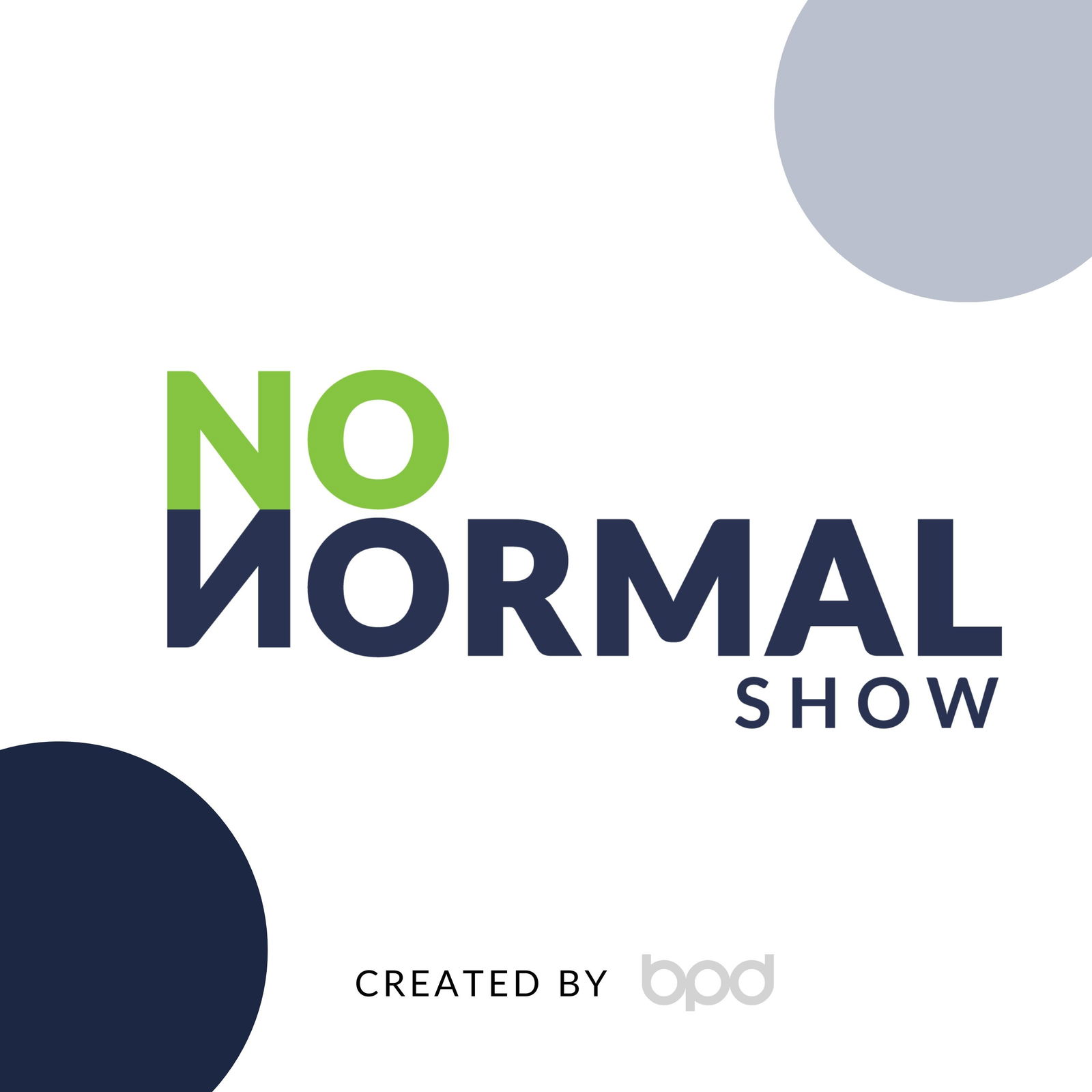
Business
News
BPD Healthcare
In our world of branding and marketing in the health space, there should never be acceptance of the status quo, the old-school, the normal. We should always be pushing forward, celebrating the different, breaking new ground, highlighting the innovative. So welcome to The No Normal Show, our forum for tossing around thoughts, opinions, and ideas on what’s new, cool, different, innovative, questionable, or otherwise related to how consumers navigate health. Plus some other fun stuff thrown in.
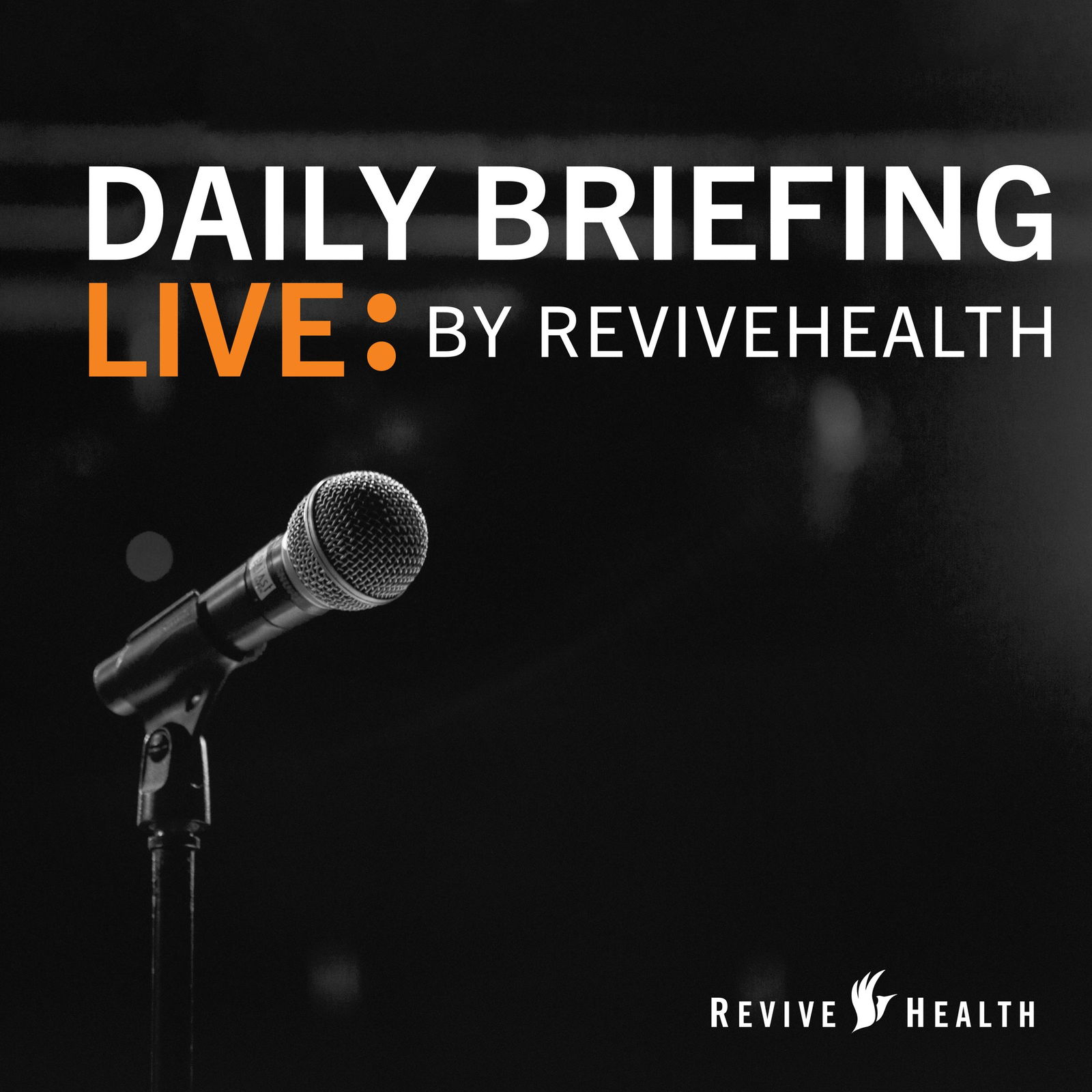
Daily Briefing Live – April 30, 2020
Key Resources Mentioned in Today's EpisodeHealthLeaders article: Teladoc Health Visits Jump 92% in Q1, Revenue Tops $180MKey TakeawaysPatient Retention Marketing StrategyHealth systems have focused on high-level brand awareness before COVID-19, and the concept of patient retention is now new territory for hospital marketers.Focusing on patient retention will require an understanding of who the customers are, what their needs are, and how to communicate with them.There should be an organizational approach to reopening health systems that should focus on:Patient acuityOperational readinessProfitabilityMarketers can help by delivering clear messaging that patients and internal personnel need to hear as it pertains to opening their doors again for elective surgeries.Virtual visits and telehealth can be a way of building trust and reassurance with patients as they are waiting for their rescheduled surgeries.
27:3701/05/2020
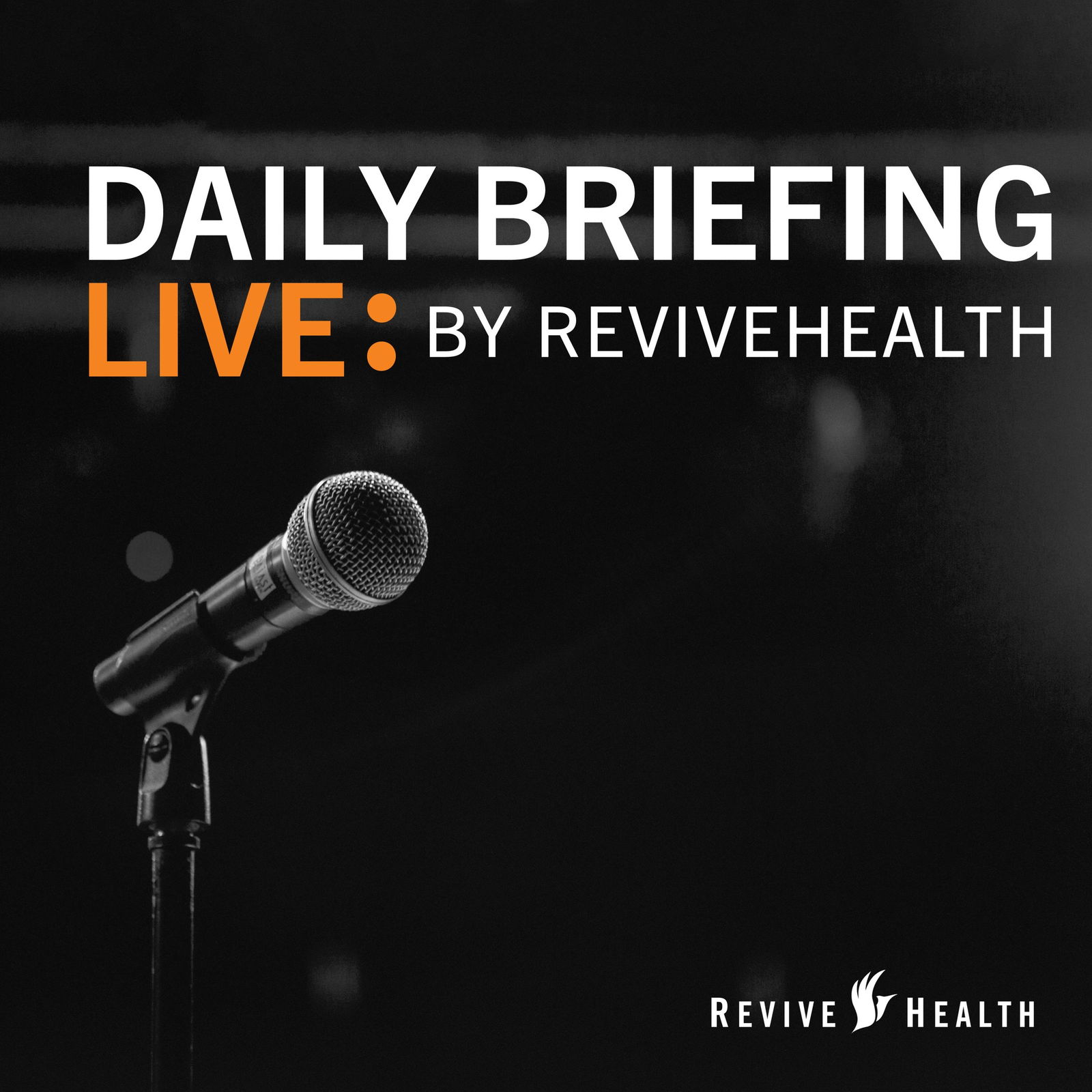
Daily Briefing Live – April 29, 2020
Key Resources Mentioned in Today's EpisodeModern Healthcare: Nearly a third of Americans have put off healthcare during COVID-19Every COVID-19 Commercial is Exactly the SameKey TakeawaysThe Role of a Brand: We use brands to help navigate our decisions, and the brands we trust promise us a specific level of quality.During this COVID-19 crisis, brands represent normality and will be beneficial in transitioning the patient's perception of healthcare to a new normal.Health systems are putting out similar messages because there is a sense of duty to provide clear and informative public announcements.Trying to establish a brand revolving around "self" comes off as tone-deaf and connotates bragging at an inappropriate time.Brands that step up and take responsibility during this time will be leaders in the industry after the crisis settles. Brand Shift in a New Normal:Health systems have the option to adopt a health-oriented brand vs. a care-oriented brand.The need for post health system brands to motivate their audience through personality branding will be more crucial than ever before.
29:2730/04/2020
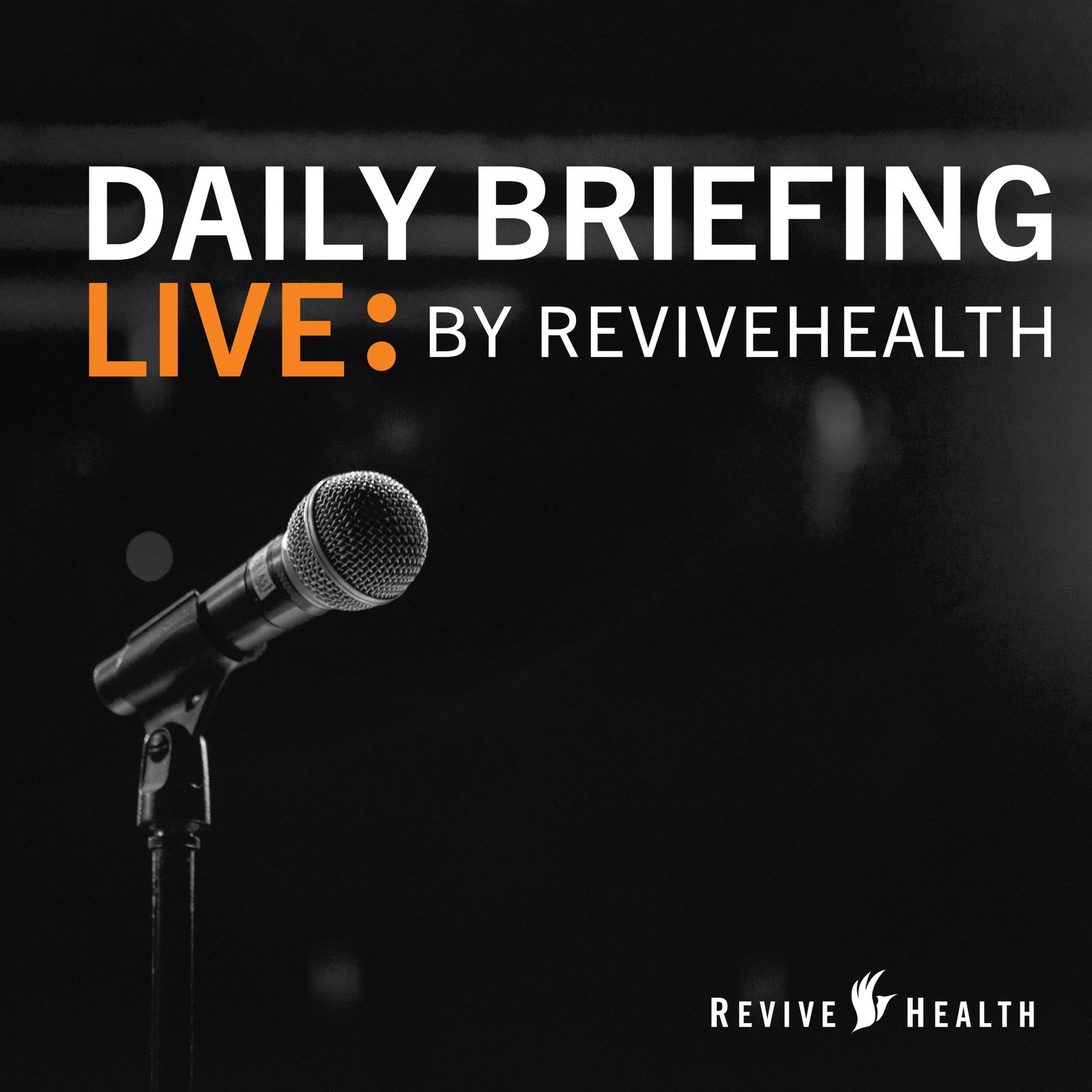
Daily Briefing Live – April 28, 2020
Key Resources Mentioned in Today's EpisodeWashington Post: U.S. deaths soared in early weeks of pandemic, far exceeding number attributed to COVID-19Key TakeAwaysOur latest research revealed that people are avoiding hospitals:People are avoiding necessary Emergency Room visits in an effort to avoid hospitals altogether.There have been increasing numbers of deaths from strokes and heart attacks nationally but decreasing amounts of stroke and heart problem related ER visits.Will this prompt a national reassessment of the COVID-19 related death count? New York has reassessed the total death count, but will other states do the same?What are the obstacles to patients that need healthcare but are not willing to go to the hospital?9/10 people are afraid of returning to hospitals even if they were to need health services.Of people that are currently in need of health services, 5/10 of them are still fearful of going to a hospital.Patients do not see a difference in healthcare facilities; they are fearful of all of them whether or not COVID-19 treatment is being administered in a given facility.People are using personal logic to assess the COVID-19 threat:It is going to be more difficult and take longer to get people back in hospitals, regardless of states opening back up.People are relying on the confirmed case and death counts to determine if hospitals are getting safer instead of listening to political officials or healthcare experts.On average, most patients anticipate it will be 3-6 months before COVID-19 settles down in their communities.Regardless of political affiliation, people are still relying on their own conclusions about safety instead of listening to political leaders.People want to see the information for themselves; how do healthcare marketers assist in this?People want to know exact information about the protective measures that hospitals are taking to protect against the spread of COVID-19.Hospitals need to be explicitly clear about sanitation, protective gear, and where the COVID patients are being treated.No amount of information is “too much” for the consumer now.People want to hear from their hospital twice a week, which is a complete shift pre-COVID desired communication patterns.
29:2229/04/2020
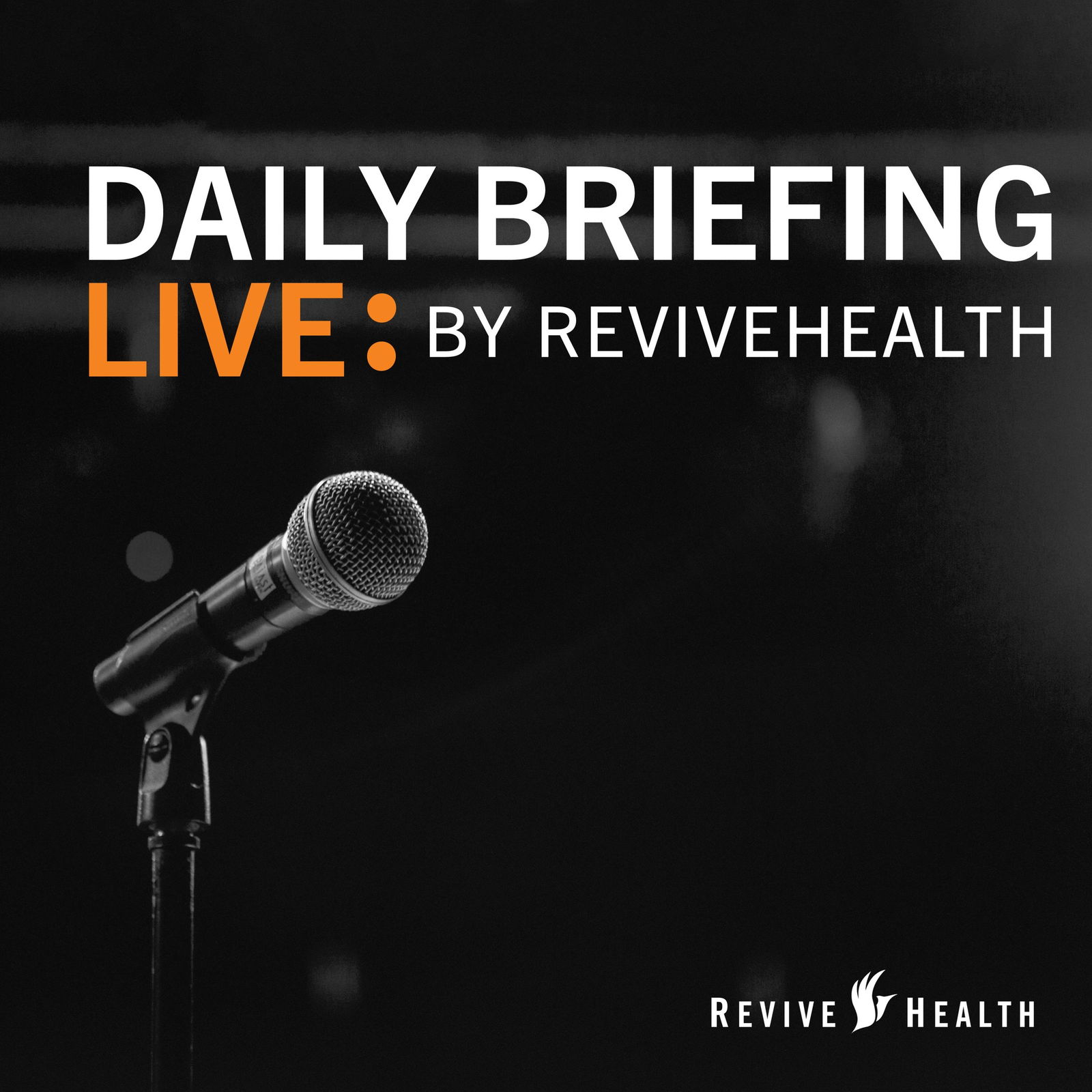
Daily Briefing Live – April 27, 2020
Key Resources Mentioned in Today's EpisodeDaily Briefing Live: March 19, 2020 with Samantha PierceModern Healthcare article: "Cigna claims data shows declines in hospitalizations for serious conditions"Vox article: "Coronavirus has created a crisis for primary care doctors and their patients"Key TakeAwaysCigna Claims Data ReportHospitalization rates for atrial fibrillation decreased 35% over the two monthsHospitalizations decreased 28% for epilepsy and seizures, 24% for gastrointestinal bleeds, and 22% for aortic aneurysms and dissectionsAdmissions for acute appendicitis and acute coronary syndromes, which include heart attacks, dropped 13% and 11%, respectivelyThe Latest on Earned MediaAfter Scripps' Chief Medical Officer went on television to assure the community that hospitals were safe, cardiologists noticed a 40% jump in workFundamental pillar for earned media is to "think human"Understand that everyone is going through their own experience, and the more we can be empathetic with consumers the more effective our stories will beIf your story fits into two of the three areas below, it's a story worth pursuing:Is it related to a strategic business initiative?Do you have a story/solution that is making a tangible difference right now in the COVID-19 response?Do you have something meaningful to share with your peers or that the mass audience can benefit from?Being ProactiveExplaining to consumers how you are planning on opening back up for surgical care, chronic care, and emergency care will provide trust to the community that everything is being put into place to keep people safe and healthyHealth systems need to be prepared to navigate billing conversation as patients will start to receive bills for the care they received for COVID-19 treatment
27:4628/04/2020
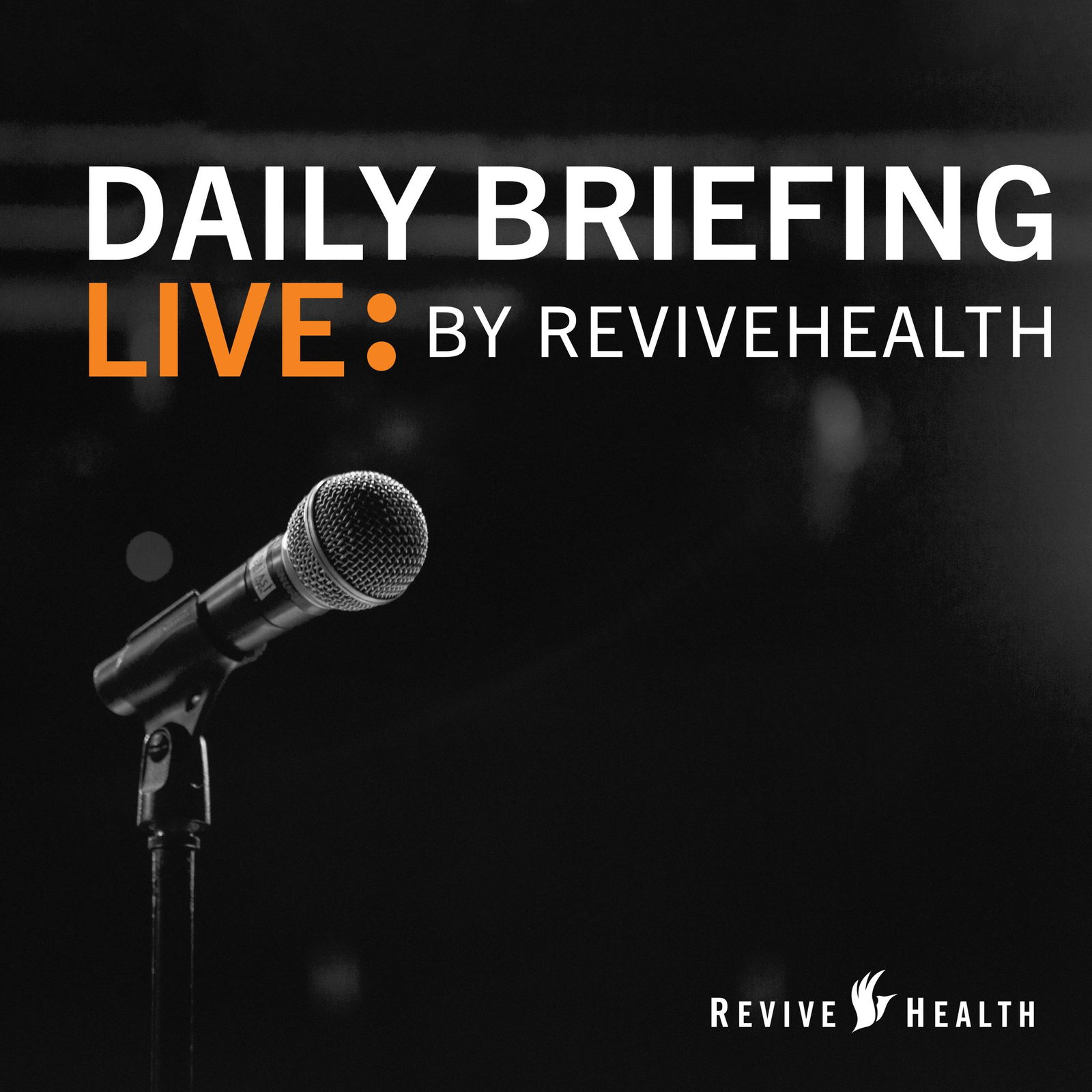
Daily Briefing Live – April 24, 2020
Key Resources Mentioned in Today's EpisodeInside the Coronavirus Battle at Our Lady of the Lake: The Fight of Their LivesKey TakeAwaysOur Lady of the Lake Created a Highly Effective News Story by Showcasing the Rawness of COVID-19 in Their Hospital.Our Lady of the Lake was leading the charge in getting the word out about how to protect yourself amid the coronavirus by having their Chief Medical Officer always available for local media coverage.Internally they weighed the pros and cons of whether or not they should allow a behind the scenes look at their hospital. After several discussions, they felt it was essential to continue to be transparent with their team and the public about the current state of COVID-19.It was crucial to make sure patient privacy was respected while also allowing journalistic freedom to capture the real story.They provided PPE education to the reporter and photographer the night before to set clear expectations.The journalist arrived at 7 am and entered the COVID-19 unit at 7:30 am. They wrapped up at 2 pm.The journalist was allowed free rein to talk to anyone as long as it didn’t affect patient care.They also knew who was going to be in the unit at that time and were able to educate the staff to be prepared to answer any questions.Typically, we look at rawness as bad, but Our Lady of the Lake opted to acknowledge that rawness is okay and even helpful to the community in this current situation.
30:1125/04/2020
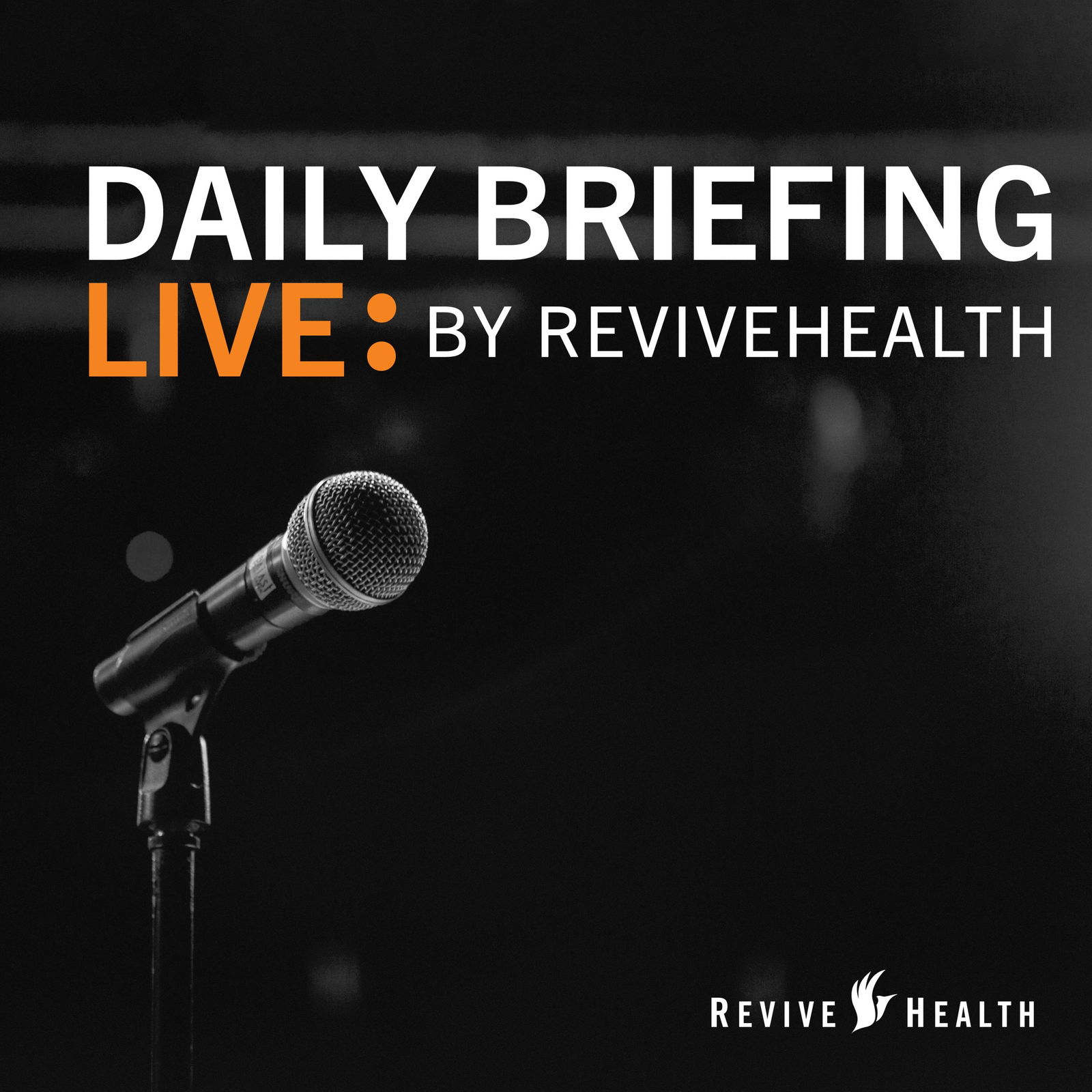
Daily Briefing Live – April 23, 2020
Key Resources Mentioned in Today's EpisodeApple and Google Partner on COVID-19 Contact Tracing TechnologyUniversity of Washing Partners with Microsoft on Contact-Tracing AppKey TakeAwaysContact Tracing TechnologyMultiple tech companies are joining forces on contact tracing technologies by creating apps that will use blue tooth technology to trace contact with people who have tested positive for Coronavirus.Apple and GoogleMicrosoft and University of Washington have partnered up to create a contact tracing app that helps public health agencies identify who has come in contacts with someone that had COVID-19Contact tracing will be very important until we have a vaccine in place and will provide physical and technical opportunities.Furloughed employees can be trained on how to become a contact tracerCommunicating to the community to opt into contact tracing apps to help flatten the curve will have to be done thoughtfully as a health system.It’s important to talk about privacy and to approach the topic carefully to come up with the right messages to educate the community so they can understand the technology and privacy issuesNext Step for Health Systems and Hospitals Currently, we’re helping clients revise the crisis playbooks they had in place before COVID-19. We want to measure how well we responded, keep what worked, and figure out what needs to be enhanced so we can rapidly and effectively respond if there is a second wave.Prepare your crisis playbook:How did your team respond to supply chain management and operations?Were you able to do media training with executives quickly?How interchangeable is your marketing and communications staff?Does your staff know their roles during a crisis?Preparing Communications for Reopening Institutions Consumers and employees who weren’t on the front line might be fearful of returning to hospitals, so it’s important to rebuild trust by providing communication internally and externally regarding how we’re going to keep people safe.Will there be a limit on the number of people allowed in an elevator?How many people will be allowed in the employee break room?How are we going to operate our cafeteria and food services for patients and visitors?The logistics will be challenging to navigate, so it’s important from a communications and marketing perspective to work hand and hand with your operations staff as soon as possible.It will be important to use the individuals who have been on the front lines to help share and train employees who are just now coming back to work.Mergers and Acquisitions M&A’s are going to be a big topic due to the financial strain health systems have faced during the COVID-19 crisis.Some health systems have delayed M&A activity after COVID-19 hit, but they are now ramping back up and are preparing for potential announcements.A few health systems have publicly paused previously announced M&A activity.Some health systems that have stronger financial pockets are using this opportunity to expand their M&A activity. A few things to consider when expanding during this time:It cannot reduce the health systems ability to address current COVID-19 issuesExpansion should be announced once systems start returning to normalIf you are the acquiring health system, it’s important to understand that decisions to furlough or cut employee pay are a reputation risk
30:3024/04/2020
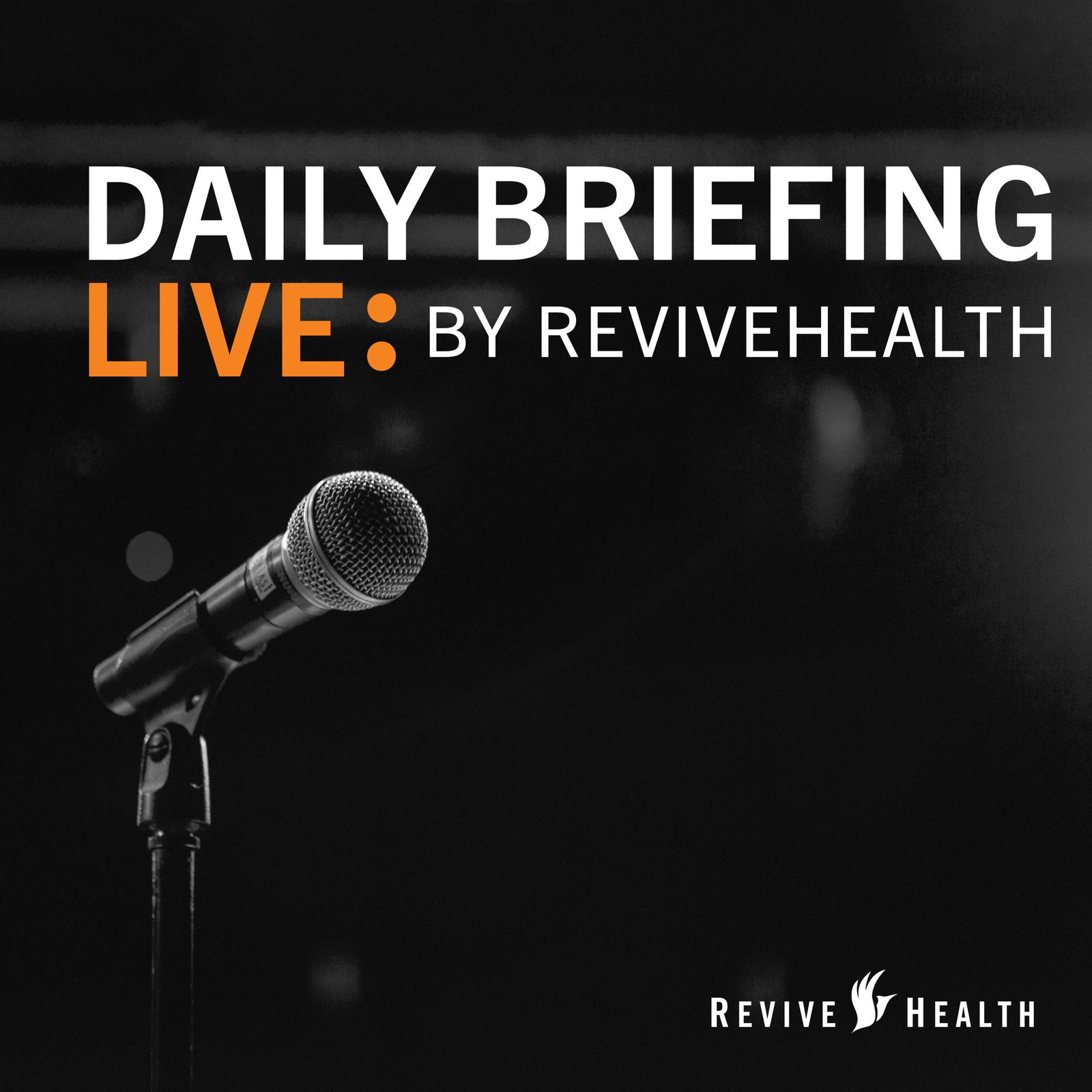
Daily Briefing Live – April 22, 2020
Key TakeAwaysMedia Consumption ChangesRecent surveys have shown that online gaming has increased 25%We are seeing a significant uptick in streaming, broadcasting, and readingTV consumption has gone up 39% across all generations, even Gen Z, who has been dubbed the “non-TV generation” Cable TVCable has become a significant source for viewer consumptionCNN’s viewership is up by 275% based on minutes consumedSci-Fi content has seen a significant uptick in views78% of consumers are trusting their local news compared to only 68% of consumers trusting national newsStreamingAmazon is up by 117% year-over-year and up 44% since February in viewership, followed by NetflixQ&AQuestion: I would be interested to hear what low cost, quick turn around media tactics you can recommend for smaller, more local health systems?Answer: Your local stations will be the best place to buy digital space. Local news is proving to be faring better than broadcast news during this time.
28:3323/04/2020
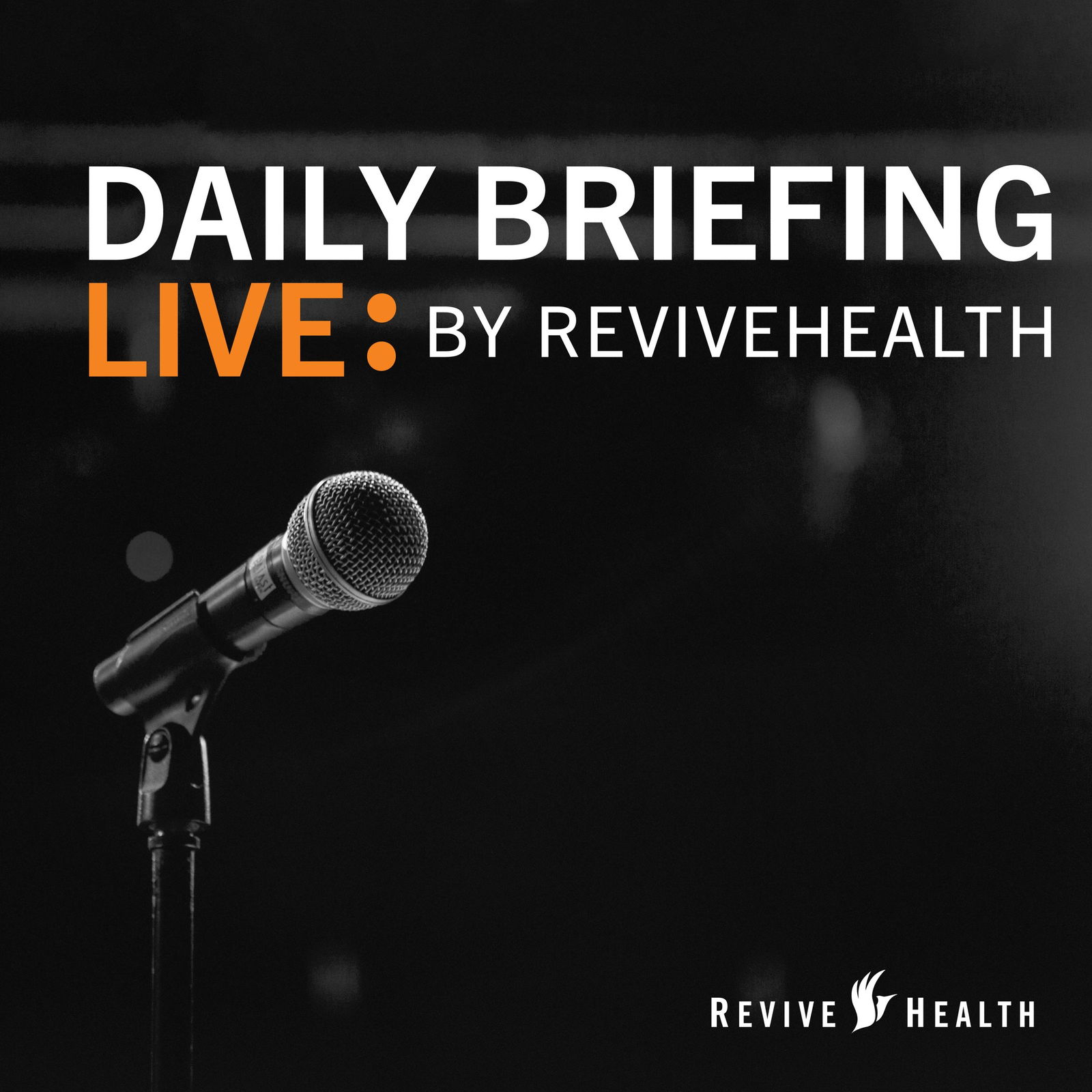
Daily Briefing Live – April 21, 2020
Key Resources Mentioned in Today's EpisodeToday's Webinar PowerPoint SlidesReviveHealth's Consumer Report Part ThreeAHA/ACS GuidelinesCMS GuidelinesKey TakeAwaysResults from Our Third Consumer Survey:Many individuals will not come back to health systems immediatelyPeople have delayed their care due to fear of going to hospitals and catching the coronavirus from other patientsAccording to our consumer survey, health systems should be thinking about promoting facility cleanliness because 56% have a lot of concern over a health system's cleanlinessRapid Recovery TimelineEvery market will be different due to multiple factors (Governor, hospital preparedness, larger v. smaller markets)Even if there isn't a 2nd wave of COVID-19, hospitals and health systems should be preparing for the flu in the fall and a possible resurgence of COVID-19 during the fall/winter.First-mover advantageThe 1st priority is protecting delayed or canceled surgeries.There's an opportunity to grow patient base through aggressive marketing.Protect and build market shareThose who move first will be able to avoid forced financial restructuringFirst mover's will have a buffer against future COVID-19 disruptionPlanning Assessment AreasBusiness PrioritiesService-line, profitability, prioritization by patient need, payor, statusOperational ReadinessFacility-by-facility, equipment/supply status, staff readinessMarket AssessmentImpact of COVID-19 on the community, consumer and brand sentimentMarketing CapabilityStatus of Staff, budget, available partnersRapid Recovery Marketing InitiativesConsumer targetingPatient RetentionPatient AcquisitionReputation Assessment & ActionStaff EngagementMeasurement & ROIQ&AQuestion: Can you give some examples of what we'd say or do to stay in front of a patientAnswer: Provide guidelines for how you're going to prioritize patients. Be proactive with telehealth (check-in with scheduled patients). Provide them with content to show that we value. Question: I think this reluctance/fear to engage might mean that our time to convert from initial outreach to actual patients/customers takes much longer than we're used to. How do we ensure that our leaders understand that and fund marketing efforts accordingly? What might have needed three months of funding in the past might require 6 to 12 months of funding.Answer: The planning process should show the value of this marketing initiative and should be prioritized. Question: What do you recommend as low hanging fruit - i.e., data to look at to inform rapid recovery? There is a lot of internal data in our organization, from delayed procedures to referral network patterns to virtual visit data. Any thoughts on the first steps to take?Answer: Personalized messaging will help retain patients we already have. We already have all of their information, so we should take advantage of the ability to talk to them on a personal level.
01:00:0622/04/2020
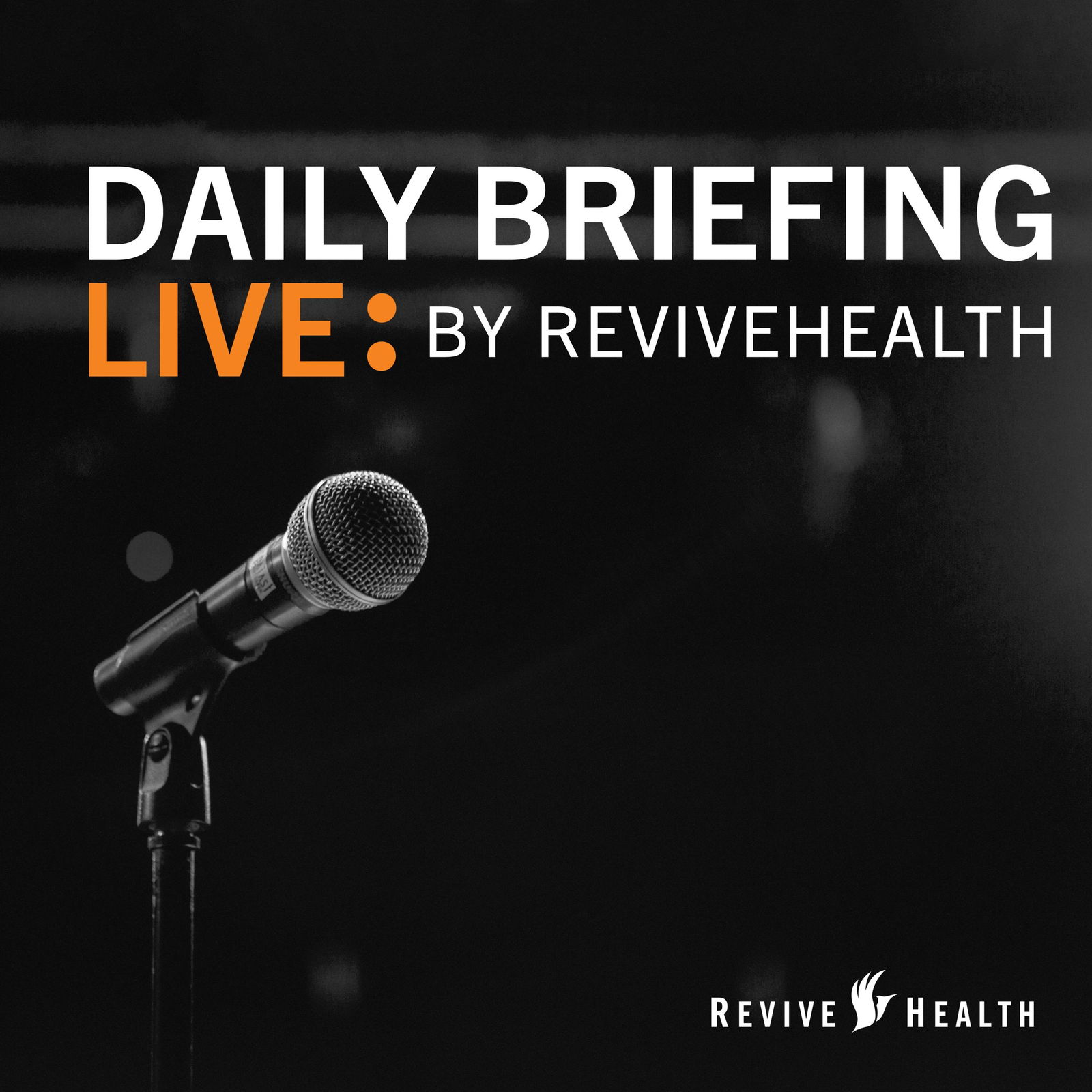
Daily Briefing Live – April 20, 2020
Key Resources Mentioned in Today's EpisodeReviveHealth's Consumer Report Part ThreeRegister for the Rapid Recovery Show on April 21 at 12:00PM CSTAHA/ACS GuidelinesCMS GuidelinesKey TakeAwaysConsumer Survey Part 3 Update:As we move towards a potential recovery period, we want to focus on consumers and where their hesitations might exist and what hospitals can do to address those concerns to get consumers back into hospitals for elective surgeries.Even when restrictions are lifted, we found there are still many people that will be hesitant to go to a local hospital.Most individuals who are interested in returning sooner are concerned with severe or chronic conditions (26%).36% of people said they would intentionally delay care.56% of people are very concerned with contracting COVID-19 from other patients56% of people said they are very concerned about the cleanliness of facilities due to the coronavirusDoctors continue to be the most trusted source for consumers to feel comfortable to come back to a care facility.There’s been a significant increase in the number of people who have heard of telehealth compared to previous surveys (58% to 77% of all consumers have heard of telehealth).
28:3421/04/2020

Daily Briefing Live – April 17, 2020
Key Resources Mentioned in Today's EpisodeSubscribe to the Daily Briefing Live PodcastPublic Opinion Strategies Slide Deck on COVID-19 SurveyKey TakeAwaysNational Public OpinionAre people supportive of the lockdown?The majority of Americans have been supportive of the measures implemented to prevent spread.Between the beginning of March and the end of March, there's been a significant opinion shift on the severity of COVID-19.People are concerned that some local governments are going to relax preventative measures prematurely.There's a significant drop in the overall confidence in the economy, even when compared to 9/11 and the 2008 recession. Medical PrivacyMedical privacy has been an important issue that most people have felt should be a priority. Since COVID-19, people have been willing to offer up their privacy in the name of getting back to normalcy.Q&AQuestion: How important is it for our clients to think about the different variables of local economies and how they have been affected by COVID-19?Answer: It will be different state by state; health systems will need to take advantage of the goodwill they are receiving. Right now, communities are viewing hospitals as the backbone of the community.
40:2018/04/2020
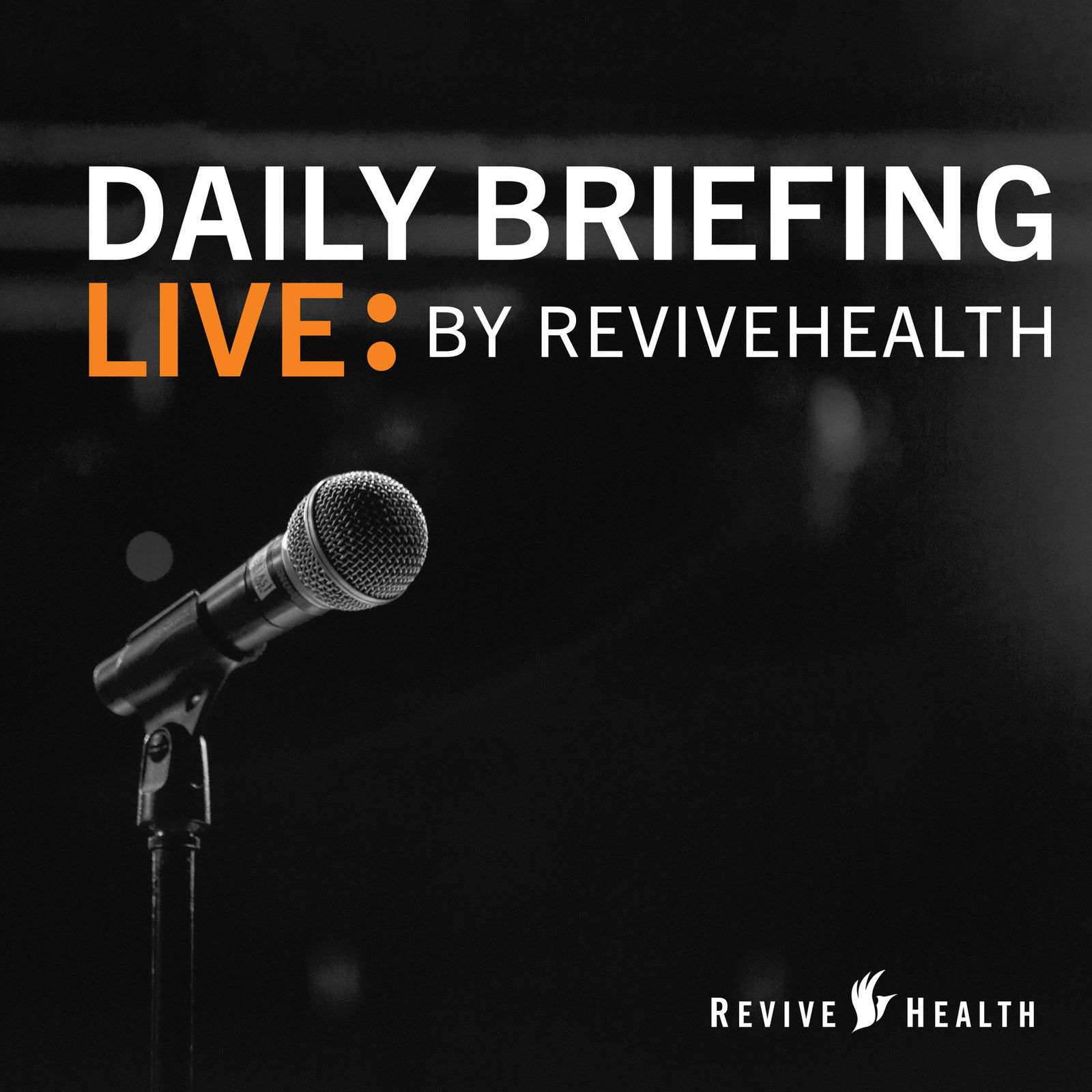
Daily Briefing Live – April 16, 2020
Key Resources Mentioned in Today's EpisodeSubscribe to the Daily Briefing Live PodcastTrump Set to Unveil Guidelines for Lifting Coronavirus RestrictionsRegister for the Rapid Recovery Show with Brandon Edwards on April 21Key TakeAwaysHealthcare Costs and Hospitals Role in AffordabilityDuring COVID-19, there's a reprieve in the narrative of pointing the finger between pharmaceutical companies, payor companies, and health systems.But this surrounding narrative around cost will reemerge in the future.Hospitals and health systems can leverage the goodwill they're receiving by building relationships with employers and consumers now to continue to build the brand preference and reputation in the local market.Rapid Recovery - By GenerationInteraction with the health system by generationBoomers and older Gen XWill be the ones responsible for filling the surgical suites in the rebuild post COVID-19Millennials and older Gen ZAre considered the "drive-through" generation who think of their care more holistically and are driven by convenienceKey factors that influence these generations are cost, convenience, personalization, and technology.COVID-19 has forced the adoption of new technologies and digital innovations to improve operational efficiency.Rapid Recovery - By BrandThe rapid recovery of patient retention, acquisition, and market sharers should sync with the post health system approach to branding. We need to keep brand-building campaigns alive.
28:3917/04/2020
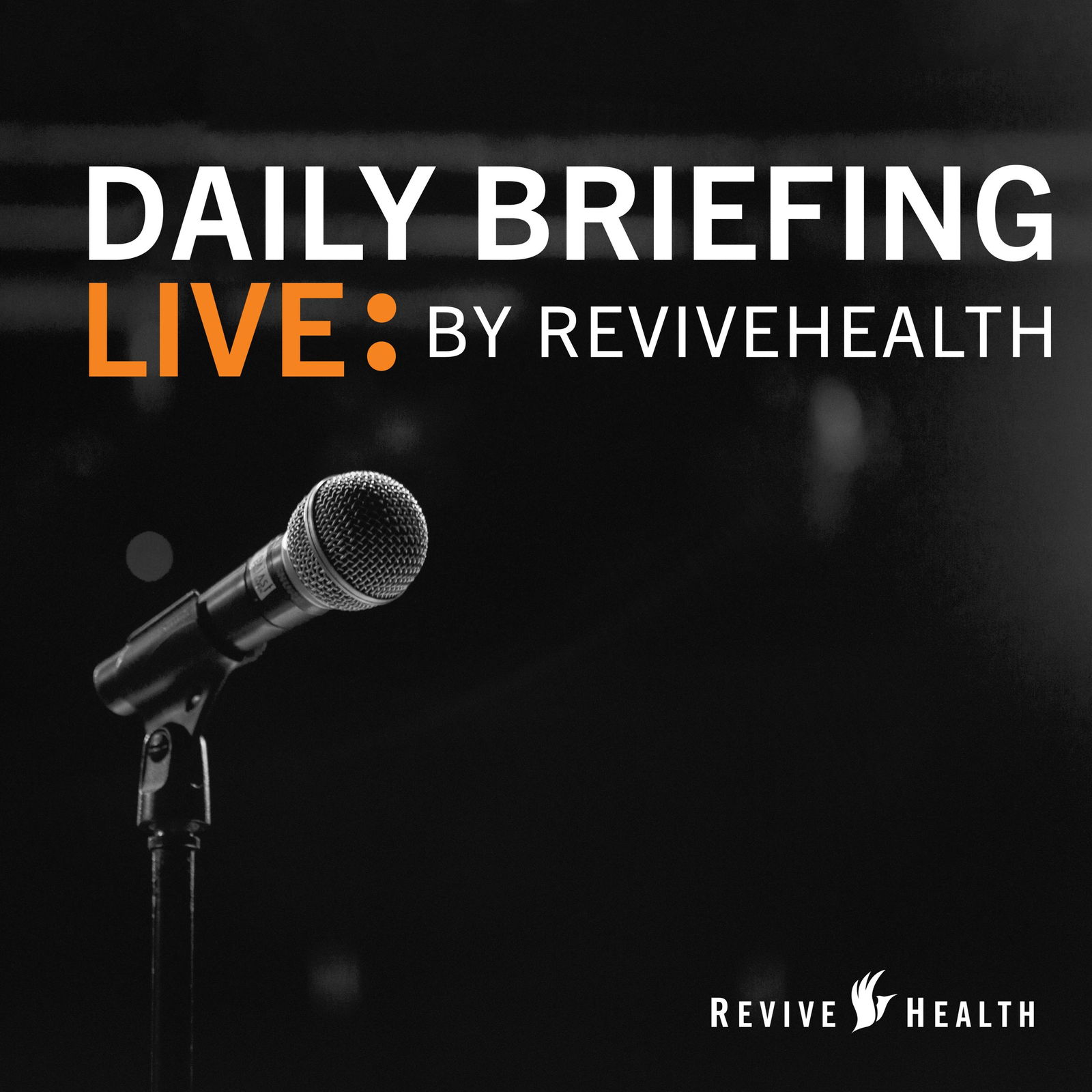
Daily Briefing Live – April 15, 2020
Key Resources Mentioned in Today's EpisodeHealthLeaders Daily BriefingHealthLeaders Intelligence ReportKey TakeAwaysTechnology Advancements Coming Out of COVID-19Telemedicine is a high demand function due to COVID-19 and will be a huge factor moving forward. Health systems that have been reluctant to leverage telemedicine are now needing to overhaul their current systems if they are going to keep up with patient expectations and demand. Financial Backlogs for HospitalsBillers and administrative workers will have to deal with an unprecedented amount of backlogged elective surgeries, which has the potential for errors or for surprise billing to show up.Health system leaders need to focus on what's happening today, while also planning for the future after crisis mode.Consumerism is driving where the healthcare system is going, and it will be interesting to see how consumer behavior and opinion change towards a health system after this crisis is over.
28:5516/04/2020
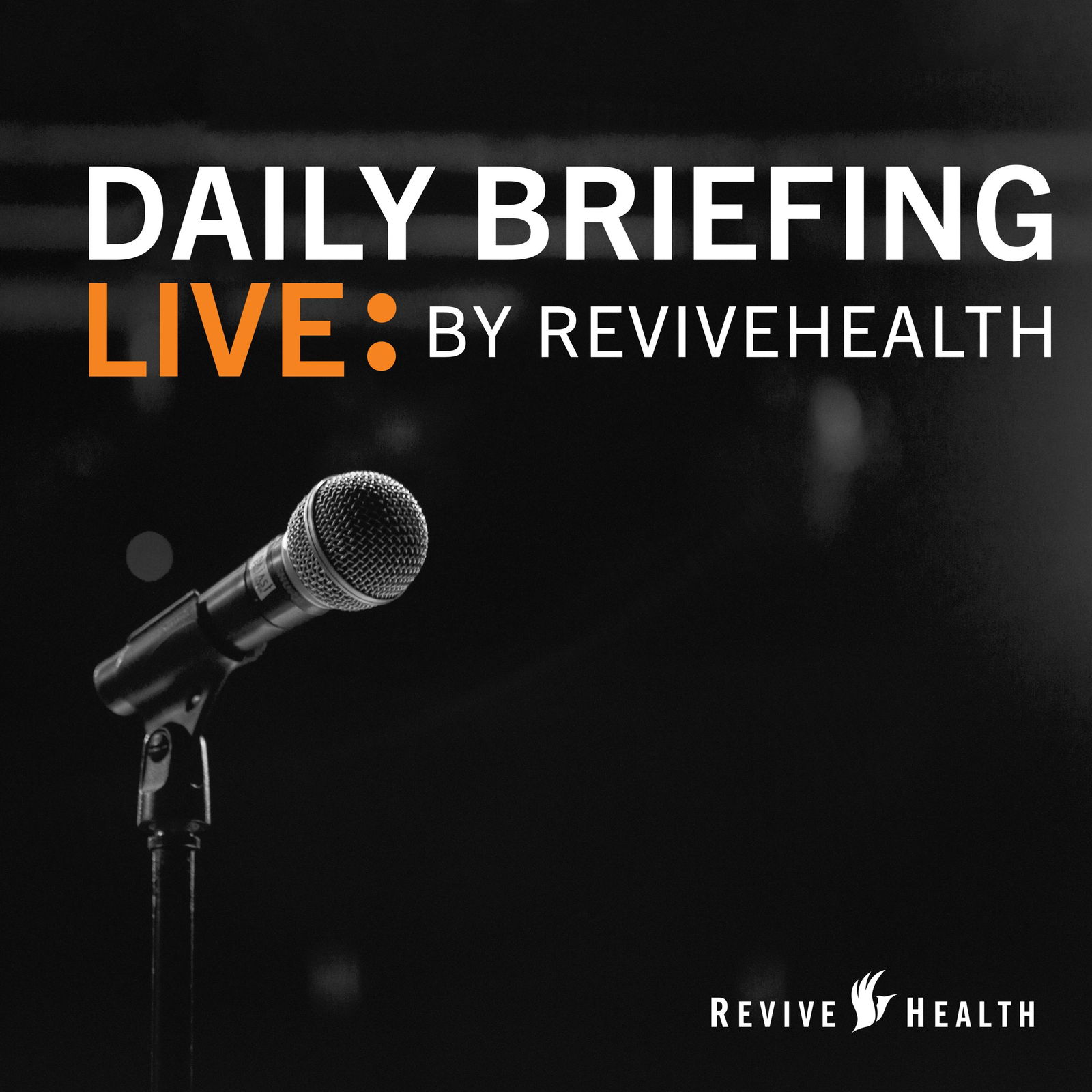
Daily Briefing Live – April 14, 2020
Key Resources Mentioned in Today's EpisodeReviveHealth Consumer Survey Report: Round 2No Surprise Billing ArticleGlobal Web Index ReportKey TakeAwaysLeveraging Content MarketingIt's critical to stay in touch with patients during COVID-19 to continue to build a brand preference.Two-thirds of Americans are searching online for updates on COVID-1987% of Americans have increased their consumption of indoor media46% of people are using Facebook as their #1 source for informationLarge brands have slowed down advertising allowing CPM's to drop to an all-time low. This is an excellent opportunity for health systems to think about how to get their message out.Thinking beyond the average messageNow that most consumers have the facts about COVID-19, people are looking to hospitals for information on health and wellness that's relevant to our current situation.It's important to consider what people are going through when creating this content.How do we keep consumers engaged that haven't personally been impacted by COVID-19?Be empatheticLeveraging healthcare workers that are not on the frontlines to offer wellness tips like the Health Esteem Instagram example.Involve community influencers to join the movement
28:1615/04/2020
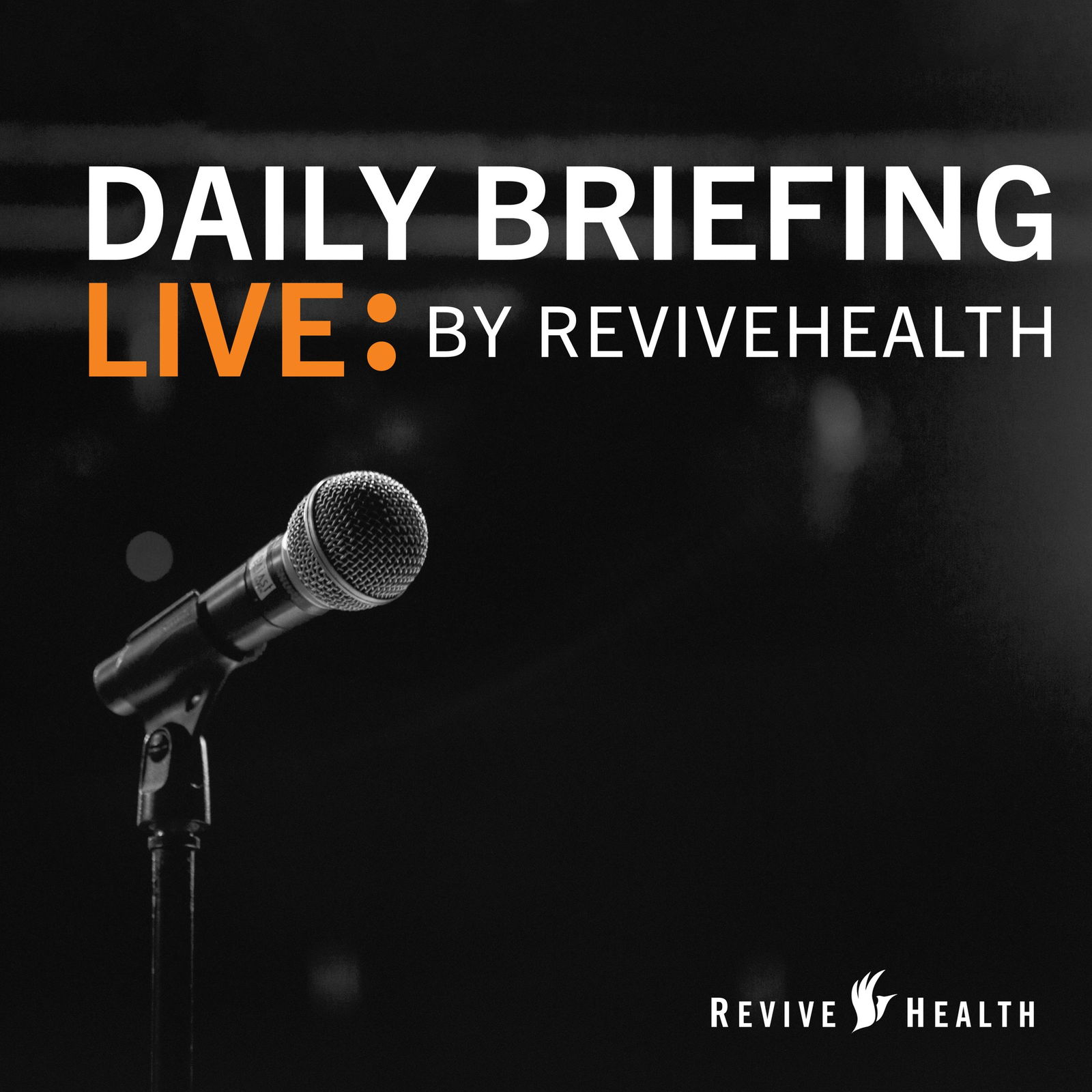
Daily Briefing Live – April 13, 2020
Key Resources Mentioned in Today's EpisodeReviveHealth Consumer Survey ReportNew York Hospital Systems Losing $450M/Month via Apple NewsNew York Hospital Systems Losing $450M/Month via WSJBlog Post by ReviveHealth’s CEO on Cares ActKey TakeAwaysPotential second wave of COVID -19A second wave of COVID-19 could be possible for late fall and early winter.We’ve used multiple sources to gather data on a potential second wave. Those sources are: University of Washington’s model, conversations from Dr. Fauci and Bill gates, the New York Times, and Northwestern’s sociology department.Scenario planningWe need to quickly encourage people to come back to hospitals when it’s deemed appropriate so hospitals can serve the pent up demand for appointments/surgeries. Health system marketers will need to make people feel comfortable about coming back to the hospitals for those elective surgeries, whether it be through adding separate entrances or other ways to make patients feel safe.Another difficult conversation that will need to be addressed by health systems is which of its patients will need to be cared for first.How will this affect us when it’s over?There’s been a slight decrease in public trust64% of Americans were not willing to allow others to get sick to enable the country to reopen.
31:0714/04/2020
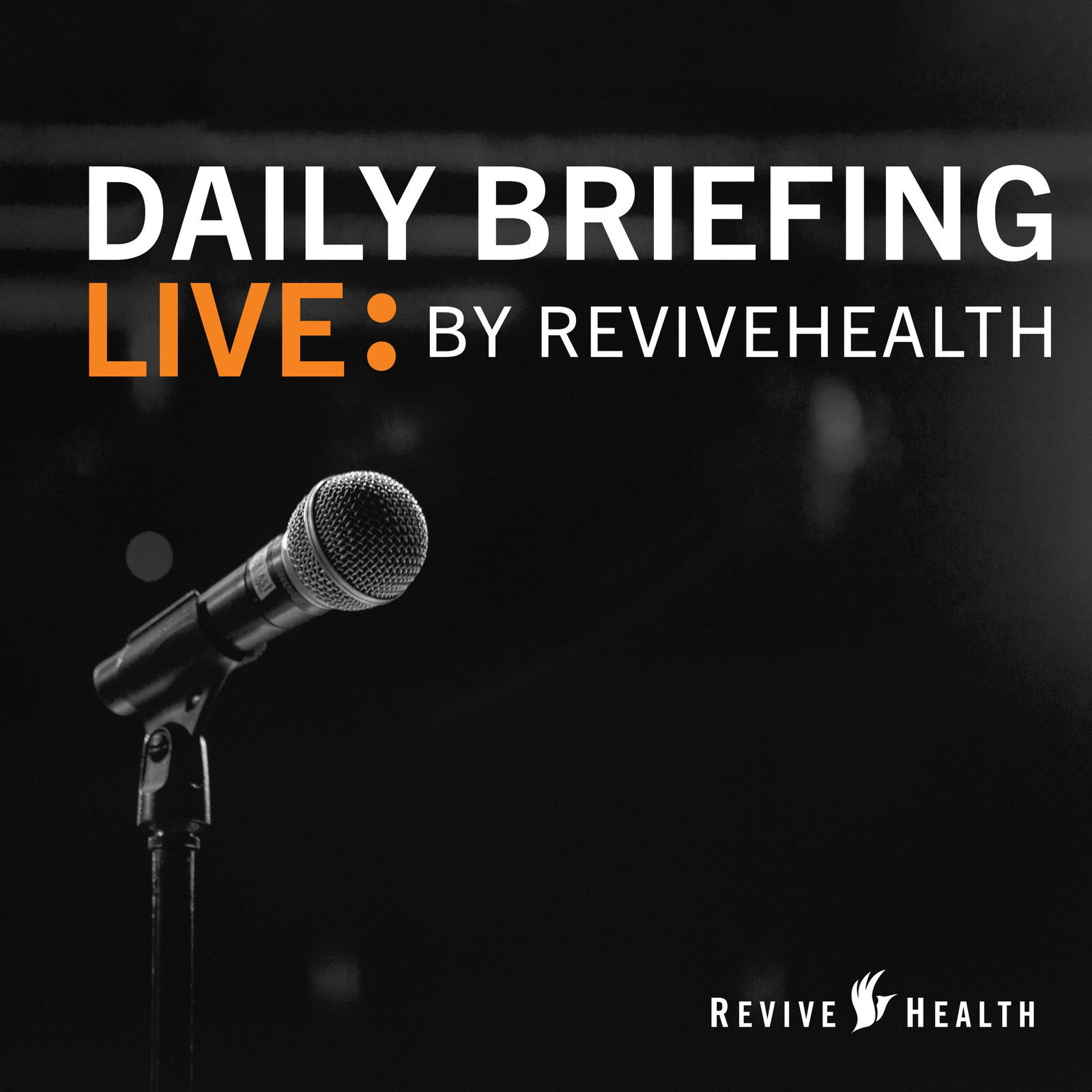
Daily Briefing Live – April 10, 2020
Key Resources Mentioned in Today's Episode:ReviveHealth Consumer Survey ReportKey Takeaways from Today's Episode:How has LA differed from other areas in their response to Covid-19?LA was an earlier adopter for the Safer at home executive order and had time to prepare first respondersWe’ve realized how financially devastating this is and are working on solutions to get back to without putting ourselves at risk.Communication Strategies from UCLA during COVID-19Daily huddles with executive leadershipWe built a website for external and internal communications as well as provided a chat bot that will soon offer a bilingual feature.We’ve provided a risk assessment on the websiteTeam LAWe wanted to remind people we can work together without having to physically be together.We’re using mostly social media with a few PSA’sCollective ResolveBehavior enforcement (physical distancing, face masks, Safer at home)Empathy Pillar (Acknowledge that this is hard but we can get through it)Gratitude for staff has received many impressions and has been popular with the community#TeamLA 170,000 impressionsQ&A:Question: How do you leverage the community goodwill that we’re gaining as hospitals and health systems in our communities moving forward into the post-COVID era? Financially, we’re going to need help.Answer: We should keep reinforcing the importance of health and continue to support hospitals and health systems.About Daily Briefing Live:Daily Briefing Live is a 30-minute live video podcast focused on how health system marketers and communicators are managing the COVID-19 crisis.Each day, we’ll feature the latest that we’re hearing from the industry and our clients, the most up-to-day recommendations and ideas, and provide a forum for attendees to ask questions. We’ll post a recording of the podcast each day for download, and then we will be back, every weekday at 12:00 CST, until this crisis passes.To join the live video podcast each day, simply visit http://bit.ly/daily-briefing-live at 12:00PM CST.
30:1113/04/2020
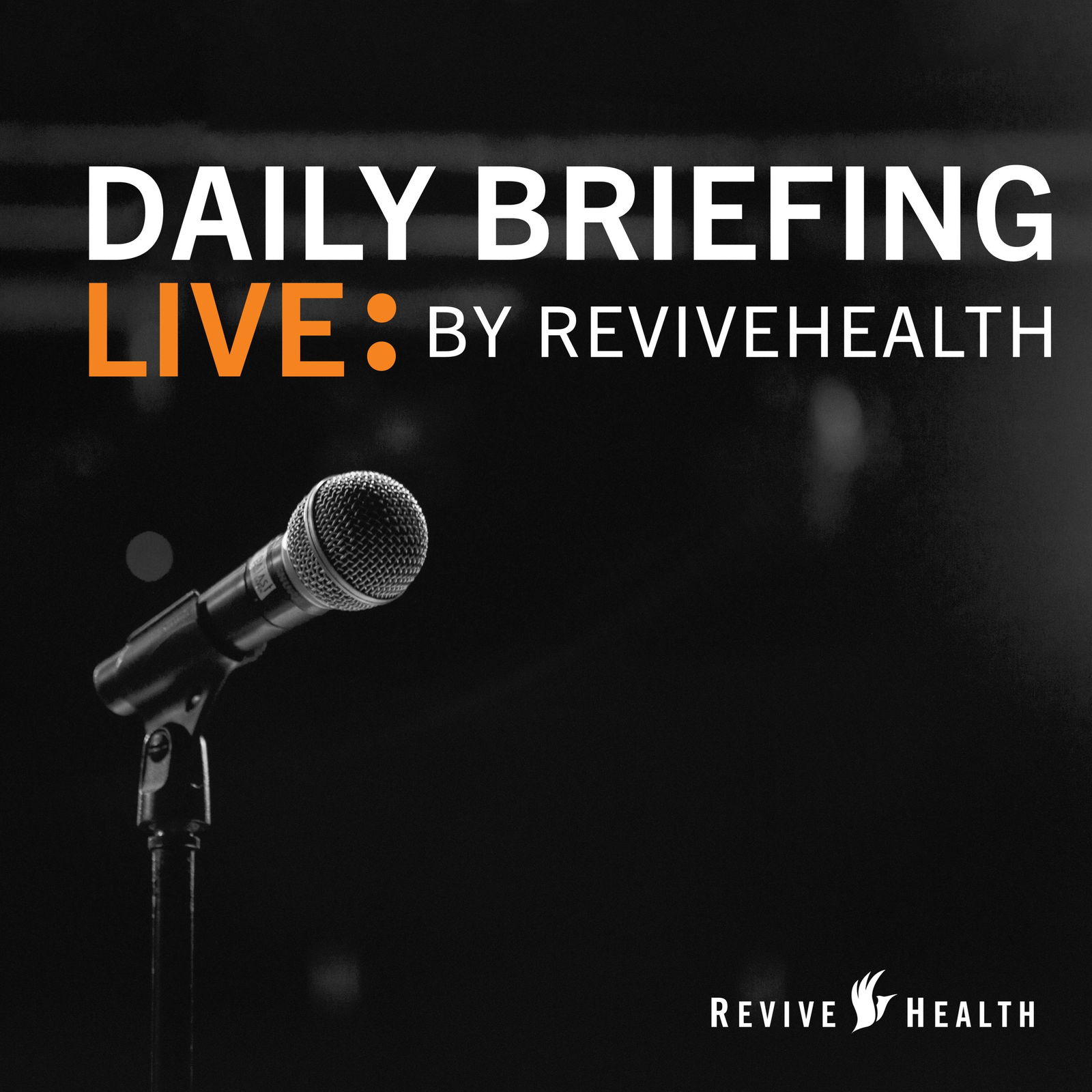
Daily Briefing Live – April 9, 2020
Key Resources Mentioned in Today's Episode:ReviveHealth Consumer Survey ReportPew Research Center ArticleGallup Report ArticleUC Davis NewsroomTwitter Thread of UC Davis Pushing Back on MediaKey Takeaways from Today's Episode:Advantages and disadvantages because of being an AMC hospitalUC Davis Health has additional resources like research and developing COVID-19 lab testing as well as having campus staff like their Dean of School of Medicine, can commit to more press time given their not on the frontline of stopping this pandemic.Another proactive strategy they've put into place is taking two people from their media response team and have dedicated them to publishing positive stories happening in and outside of the pandemic.Responsibilities of Being a Public EntityWe have to know that all internal communications will be subject to the public records act request and will need to be buttoned up as if it were for an external update. By being extremely deliberate, we're still able to help control the narrative.We held a town hall with the four local health systems CEO's in Sacramento to show unity behind the health systems and that were here to help us all get through this. The town hall idea came from our internal town halls that we were doing in that our leadership would have a weekly meeting that staff could go and ask questions. They had over 2,000 employees join the call.Relationships between Hospital and the media due to COVID-19The COVID-19 crisis has allowed hospitals to be bolder about correcting the press if a story goes out without the whole story.Don't be afraid to push back on the media if stories go public without all of the critical facts from the health system.Q&A:Question: In this time, what is more important in distinguishing a health center from another? Should we be focusing on local medical coverage or consider elevating your brand on a national level?Answer: It's an opportunity to define yourself in the market place and at the national level. An important question to ask is, what were you aiming for before the crisis? It doesn't make sense to strive for national recognition if that wasn't what your marketing and business goals were for the year.About Daily Briefing Live:Daily Briefing Live is a 30-minute live video podcast focused on how health system marketers and communicators are managing the COVID-19 crisis.Each day, we’ll feature the latest that we’re hearing from the industry and our clients, the most up-to-day recommendations and ideas, and provide a forum for attendees to ask questions. We’ll post a recording of the podcast each day for download, and then we will be back, every weekday at 12:00 CST, until this crisis passes.To join the live video podcast each day, simply visit http://bit.ly/daily-briefing-live at 12:00PM CST.
29:3910/04/2020
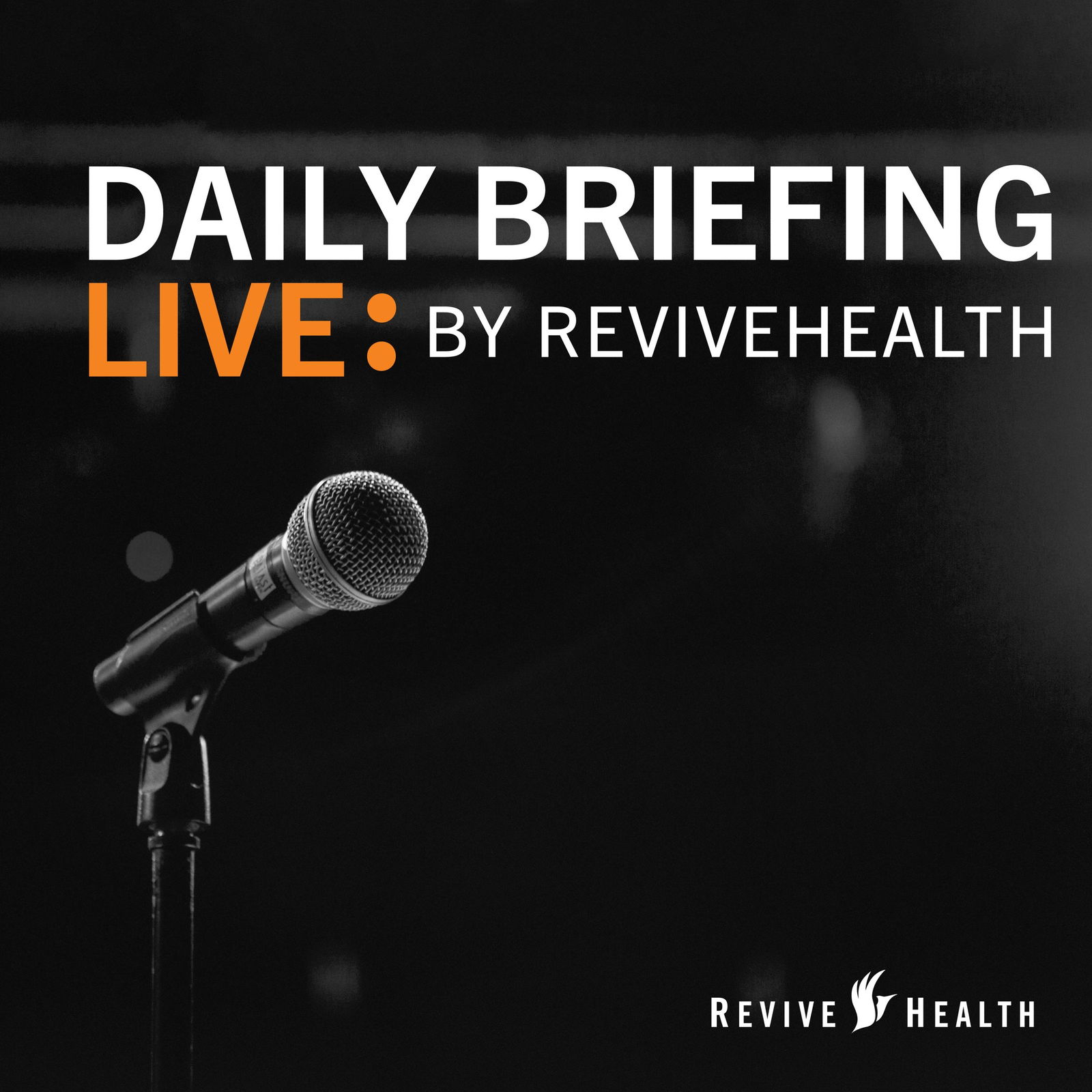
Daily Briefing Live – April 8, 2020
Key Resources Mentioned in Today's Episode:ReviveHealth Consumer Survey ReportCrisis Text LineFrontlines CounselingInstitute for Health Metrics and EvaluationNew York Times: Coronavirus Was Slow to Spread to Rural America. Not Anymore.Key Takeaways from Today's Episode:There’s still a high demand for information from local healthcare leaders, followed by national experts.Consumers still want to know where they can get tested and when they should get tests.The majority of people are taking social distancing and other precautions seriously, but don’t feel like others are taking it as seriously.71% of consumers are now interested in using Telehealth, which is a significant jump from our previous survey two weeks ago at 58%.Health Systems marketers should be focusing on the patient experience of Telehealth to ensure the adoption of virtual visits continue. Q&A:Question: How long do we need to push information on COVID-19 consistently? What content comes after or at the same time?Answer: Communicating about the COVID-19 are crucial to flatten the curve, and we will need to continue these efforts even as we come out of the peak levels. Personalizing communications to patients who have put off care due to COVID-19 delays, will go a long way to retain patient loyalty.About Daily Briefing Live:Daily Briefing Live is a 30-minute live video podcast focused on how health system marketers and communicators are managing the COVID-19 crisis.Each day, we’ll feature the latest that we’re hearing from the industry and our clients, the most up-to-day recommendations and ideas, and provide a forum for attendees to ask questions. We’ll post a recording of the podcast each day for download, and then we will be back, every weekday at 12:00 CST, until this crisis passes.To join the live video podcast each day, simply visit http://bit.ly/daily-briefing-live at 12:00PM CST.
30:4309/04/2020
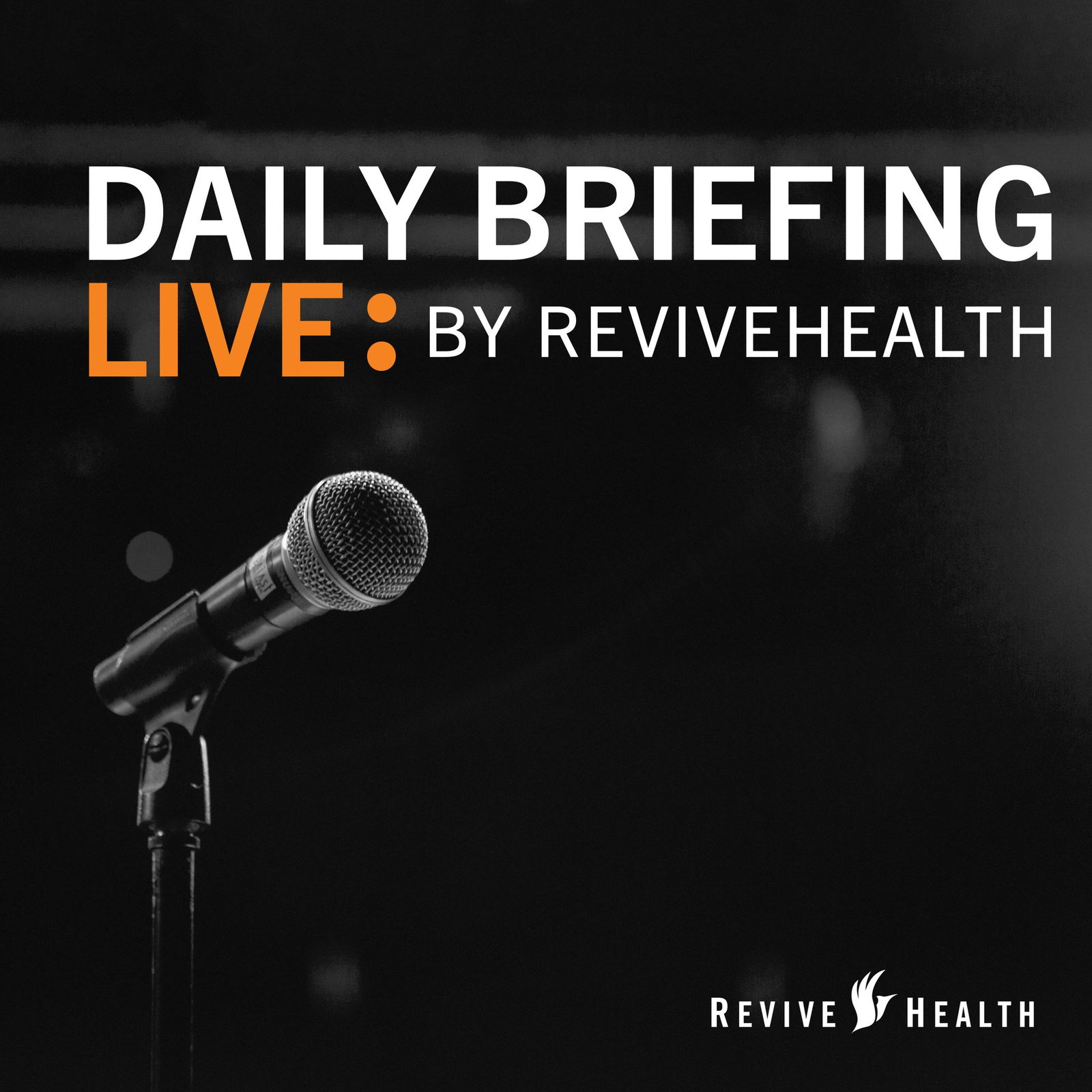
Daily Briefing Live – April 7, 2020
Key Resources Mentioned in Today's Episode:ReviveHealth Consumer Survey ReportStanford Medicine National Daily Health SurveyKey Takeaways from Today's Episode:What Have We Learned from Remote Collaboration?Health systems that lack CRM and marketing automation tools will start to prioritize getting these martech stack investments in place. A silver lining of COVID-19 is that it has provided a window of opportunity to audit processes and will force CRM adoption.Adoption of a CRM tool will be even more critical for patient engagement and retention as their waiting time for elective surgeries will increase. Elevate the perception of marketingIn a post-COVID-19 world, healthcare marketers will need to focus on brand marketing as well as promoting service lines. Marketers should also consider providing a POV section with their fiscal year planning that discusses COVID-19 and the lessons learned through this crisis.Healthcare organizations do have an opportunity to leverage their philanthropy efforts appropriately.What can we learn from other Industries?Make sure you’re providing the correct tone and appropriateness when you’re releasing information on COVID-19 and your brand's actionable steps.What’s the benefit for the consumer? Provide value adds at no cost to the consumer. Some examples of this were: HBO's free subscription and Amex and Hilton providing free hotel rooms for healthcare workers.About Daily Briefing Live:Daily Briefing Live is a 30-minute live video podcast focused on how health system marketers and communicators are managing the COVID-19 crisis.Each day, we’ll feature the latest that we’re hearing from the industry and our clients, the most up-to-day recommendations and ideas, and provide a forum for attendees to ask questions. We’ll post a recording of the podcast each day for download, and then we will be back, every weekday at 12:00 CST, until this crisis passes.To join the live video podcast each day, simply visit http://bit.ly/daily-briefing-live at 12:00PM CST.
31:4608/04/2020
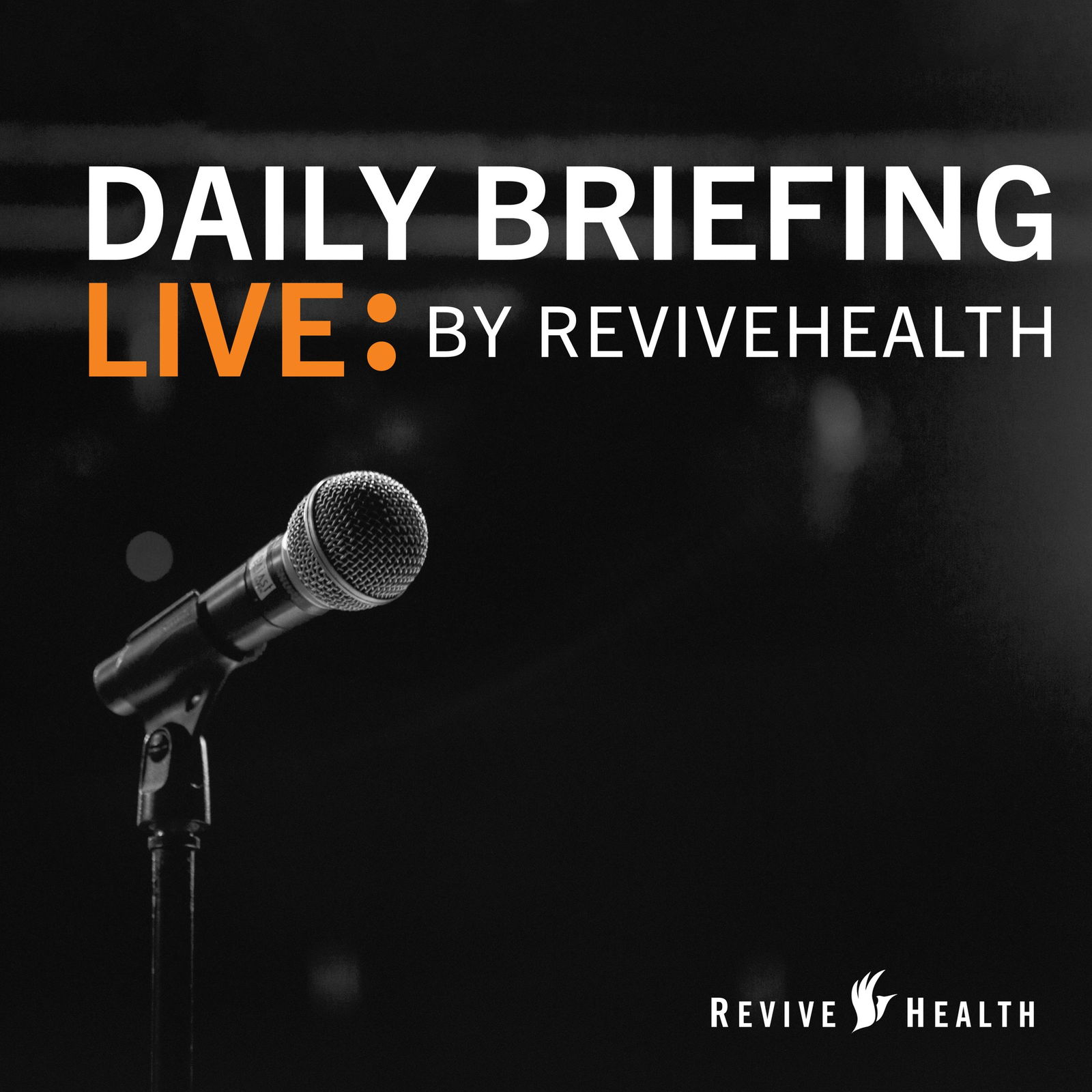
Daily Briefing Live – April 6, 2020
Key Resources Mentioned in Today's EpisodeReviveHealth Consumer Survey ReportKey Takeaways from Today's Episode:CostHospitals and health systems prior to COVID-19 have been lumped into the cost villains associated with pharma and insurance companies. Post COVID-19, public perception will be more positive and will value the worth of healthcare institutions.Before COVID-19, hospitals and health systems had to defend the costs of running their operations. Post COVID-19, the question has now changed to why aren’t we supporting them more?Changing cliche brandingCOVID-19 has brought forward the critical role of hospitals and where they stand in regards to convenience healthcare such as CVS and Walgreens.Before COVID-19 we were trying to differentiate hospitals from their competitors outside of the care they provide through their doctors and nurses. Now, showing the heroism of doctors and front-line still staff has the potential to be a major player in healthcare marketing in the next few months and years. It’s possible that people have the same sentiment for healthcare workers as they did after 9/11 for firemen and the police force. Q&A:Question: As health leaders are highly trusted...How well have the health system leaders done in stepping up to speak and lead in communities? Do any names come to mind? I've seen Tina Freese Decker from Spectrum Health in Michigan do this otherwise.....but none others. Missed opportunity?Answer: Yes, there has definitely been a missed opportunity in regards to branding, and getting us through this in general. There is a leadership vacuum associated with this crisis. People are really craving leadership and there should be at least one healthcare leader, if not more, in every market.
31:5507/04/2020
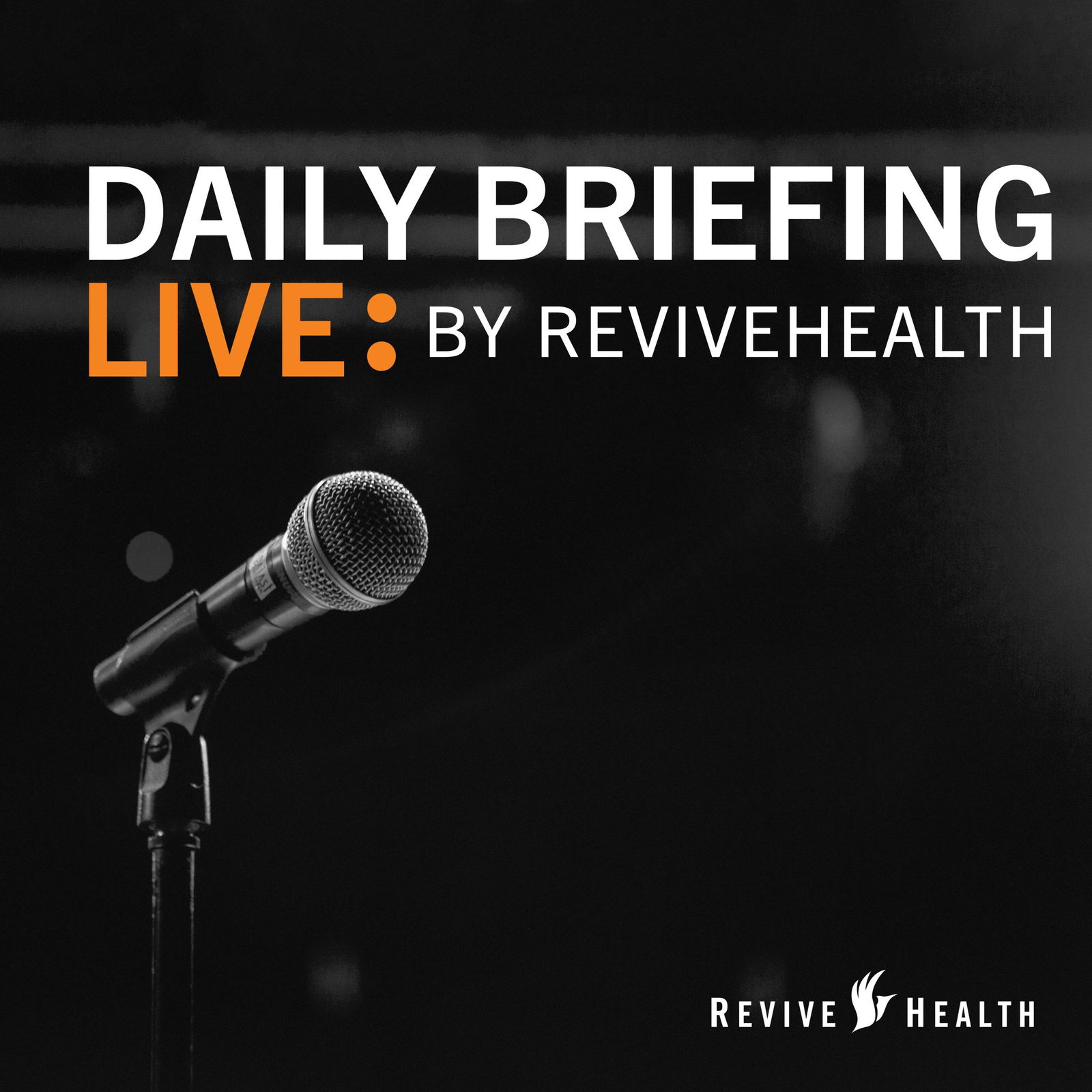
Daily Briefing Live – April 2, 2020
Key Takeaways from Today's Episode:Planning for Post COVID-19Today, managing the current crisis must be the top priority, but health systems will soon need to start focusing on rapid financial recovery to save institutionsPhases for Marketing in 2020Phase 1: COVID Crisis and how we're communicating with external and internal audiences on what we're doing to help everyone get through this crisis.Phase 2: Initiating a Rapid Recovery plan around elective surgeryThis will most likely begin in the summer, but will vary based on locationThe primary challenge will be to make people feel comfortable to come back into a hospital for elective surgeriesHealth systems who are the first movers here will have the opportunity to grab significant market share. Those who wait and aren't planning now will be too late and loose ground.Phase 3: We will potentially see a resurgence of COVID come back in the fall and winter when the seasonal flu comes back around. We will need to be ready to address community concerns and how we're handling it as a local health systemStimulus PackageThe package is critically important but is not a solution to the whole problem.Hospitals are having to replace high margin surgical volume with low margin medicare payments, in addition to taking on much higher supply and operating costsStimulus 1 & 2 would be helpful, but it's going to be up to the hospitals to shift from the COVID-19 response to post COVID rapid recovery quicklyPrimary Marketing ChallengeAre we planning for this phase two now?Are we tackling this early enough that when the time is right, we're the first to market?Q&A:Question: When is the right time to go out with new post COVID messages? How soon is too soon?The time to be thinking about rapid recovery is now. Starting to plan for a campaign now will allow systems to go live in June.Every market will differ with timing in when this phase two approach should begin, but we don't believe it will be before June.About Daily Briefing Live:Daily Briefing Live is a 30-minute live video podcast focused on how health system marketers and communicators are managing the COVID-19 crisis.Each day, we’ll feature the latest that we’re hearing from the industry and our clients, the most up-to-day recommendations and ideas, and provide a forum for attendees to ask questions. We’ll post a recording of the podcast each day for download, and then we will be back, every weekday at 12:00 CST, until this crisis passes. To join the live video podcast each day, simply visit http://bit.ly/daily-briefing-live at 12:00PM CST.
37:2703/04/2020
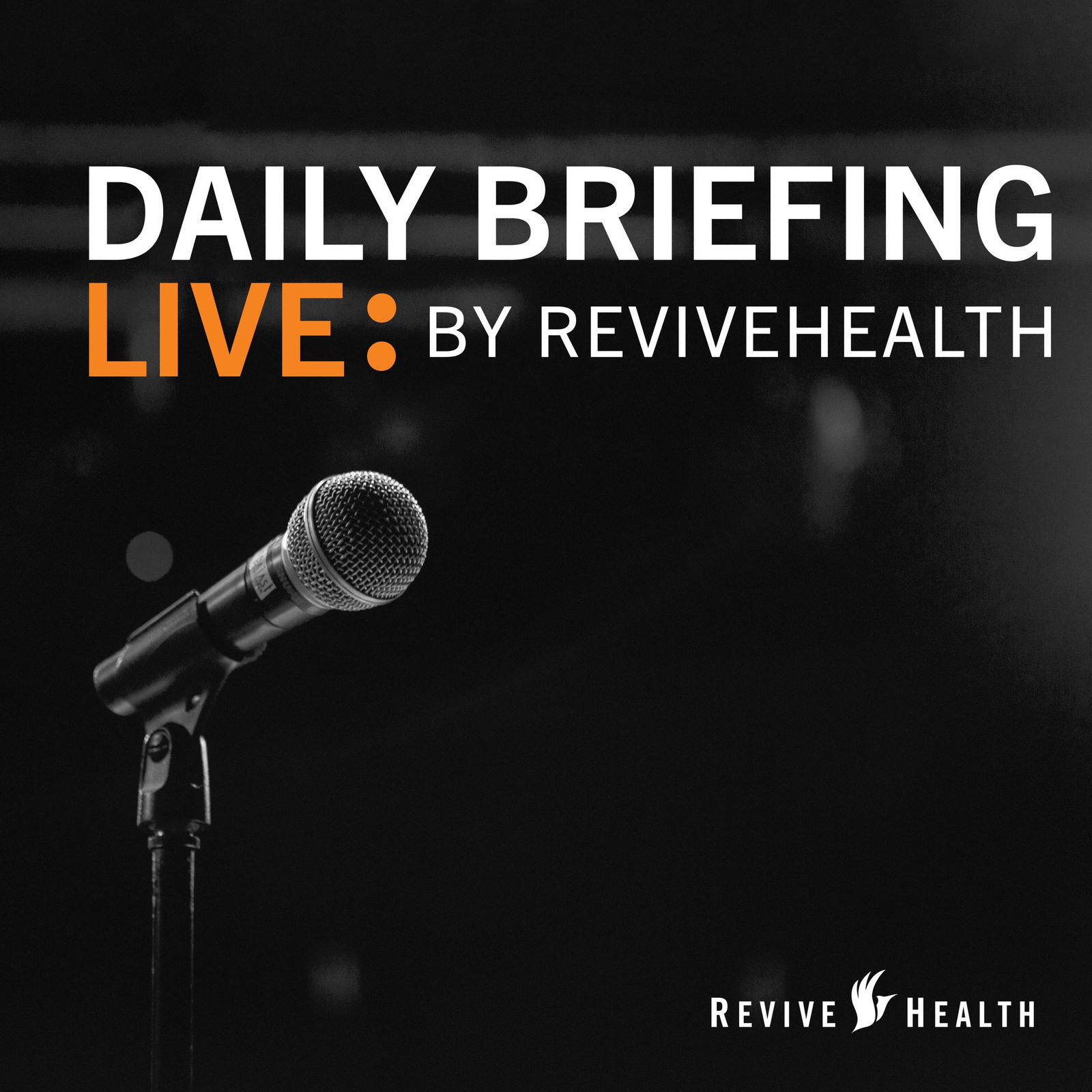
Daily Briefing Live – April 1, 2020
Key Resources Mentioned in Today's EpisodeSubscribe to the Daily Briefing Live PodcastReviveHealth COVID-19 Resource HubArray Advisors ReportNew York Times: White House Predicts 100-240k US DeathsUN March ReportBoston Medical Center Furloughs 10 Percent of its WorkforceDoctors Answer Coronavirus Questions in Exclusive SiriusXM Facebook Live SessionKey Takeaways from Today's Episode:Pivoting Physician communicationsThe US surgeon general is keeping pace with the changing science and is saying that we may see citizens advised to wear face masks in publicIncreasing financial strain on health systemsHospitals typically have 60 to 90 days of cash on handBoston medical center is predicted to lose $5m a weekMany executives forgoing pay for the next monthFurloughs and layoffs for hospital workers who don’t have frontline dutiesCommand Centers and accurate communicationWe see a long and complicated communication journey around COVID-19 that will last weeks and, if not months, on end. Command centers typically are short-term programs that have an end in sight, but this is not like most situations.About Daily Briefing Live:Daily Briefing Live is a 30-minute live video podcast focused on how health system marketers and communicators are managing the COVID-19 crisis.Each day, we’ll feature the latest that we’re hearing from the industry and our clients, the most up-to-day recommendations and ideas, and provide a forum for attendees to ask questions. We’ll post a recording of the podcast each day for download, and then we will be back, every weekday at 12:00 CST, until this crisis passes. To join the live video podcast each day, simply visit http://bit.ly/daily-briefing-live at 12:00PM CST.
30:4402/04/2020
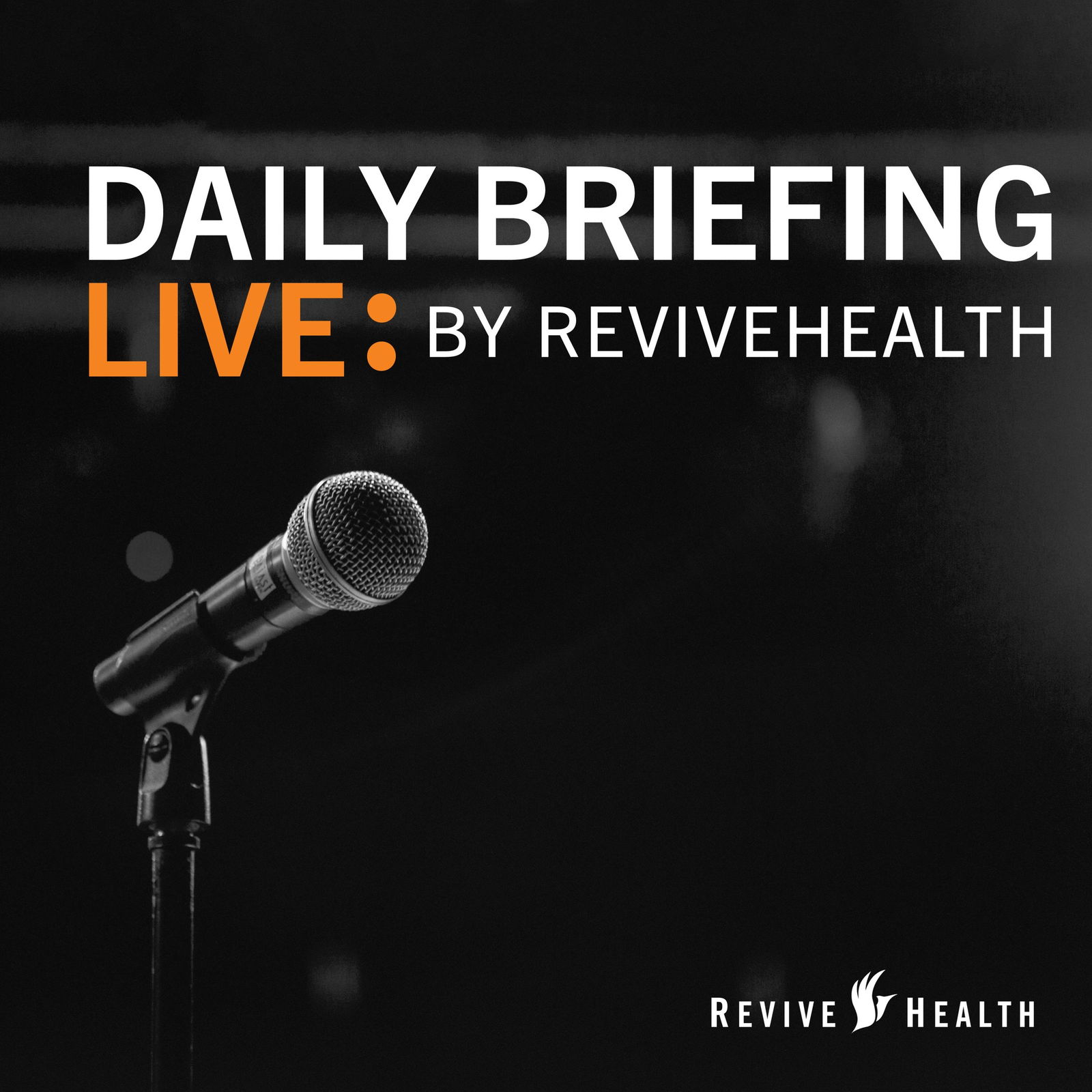
Daily Briefing Live – March 31, 2020
Key Resources Mentioned in Today's EpisodeReviveHealth Consumer Survey Report on COVID-19Public Opinions Strategy ReportBloomberg Article: Hospitals Tell Doctors They’ll Be Fired If They Speak Out About Lack of GearKey Takeaways from Today's Episode:When it comes to best practices for internal communications, start with empathy – acknowledge this is scary for people.It's essential to communicate in multiple ways. People aren't reading all the emails, so you also have to get to them in person, through video, etc.We need to guide nurses and front line staff to understand what they need to do to not take this virus home with them.If you don't have digital media monitoring set up to follow conversations, start now. Otherwise, you'll be caught by surprise.It's also not just about digital monitoring – talk to your employees. Find out how they are feeling, what they are hearing, and see where you can help.Find ways to ensure there are processes in place for two-way communication either through managers, emails, etc. About Daily Briefing Live:Daily Briefing Live is a 30-minute live video podcast focused on how health system marketers and communicators are managing the COVID-19 crisis.Each day, we’ll feature the latest that we’re hearing from the industry and our clients, the most up-to-day recommendations and ideas, and provide a forum for attendees to ask questions. We’ll post a recording of the podcast each day for download, and then we will be back, every weekday at 12:00 CST, until this crisis passes. To join the live video podcast each day, simply visit http://bit.ly/daily-briefing-live at 12:00PM CST.
30:4701/04/2020
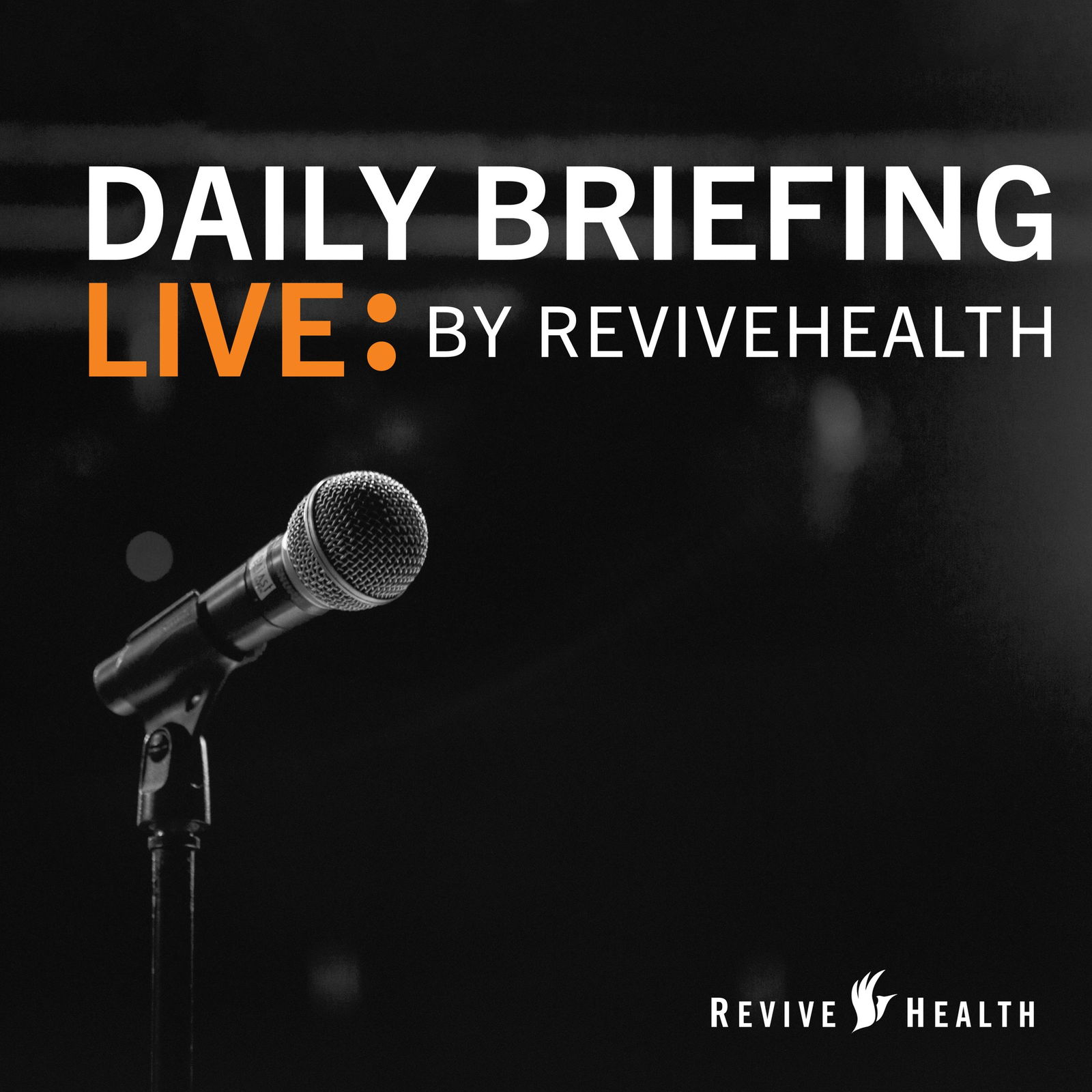
Daily Briefing Live – March 30, 2020
Key Resources Mentioned in Today's EpisodeReviveHealth Consumer Survey Report on COVID-19Here is a quick look at what a few health systems are including on their web pages for giving opportunitiesSpectrum HealthPiedmont HealthcareTrinity of New EnglandMidMichigan HealthStop Non-Domestic Violence Ad ExampleSam's Club CommercialKey Takeaways from Today's Episode:After 9/11, we saw a dramatic increase in appreciation for first responders on the scene. It will be interesting to see how the coronavirus will affect our appreciation for health care works as well as the marketing created by health systems.The way you show up as a health system during COVID-19 will have a lasting impact on your brand perception and can even have the power to swing market share one way or the other.This pandemic is reminding all of us the fundamental reason why we have hospitals and health systems.Everything we knew coming into this crisis as far as hospital marketing goes, we need to reevaluate it when coming out of the crisis. About Daily Briefing Live:Daily Briefing Live is a 30-minute live video podcast focused on how health system marketers and communicators are managing the COVID-19 crisis.Each day, we’ll feature the latest that we’re hearing from the industry and our clients, the most up-to-day recommendations and ideas, and provide a forum for attendees to ask questions. We’ll post a recording of the podcast each day for download, and then we will be back, every weekday at 12:00 CST, until this crisis passes. To join the live video podcast each day, simply visit http://bit.ly/daily-briefing-live at 12:00PM CST.
29:4131/03/2020
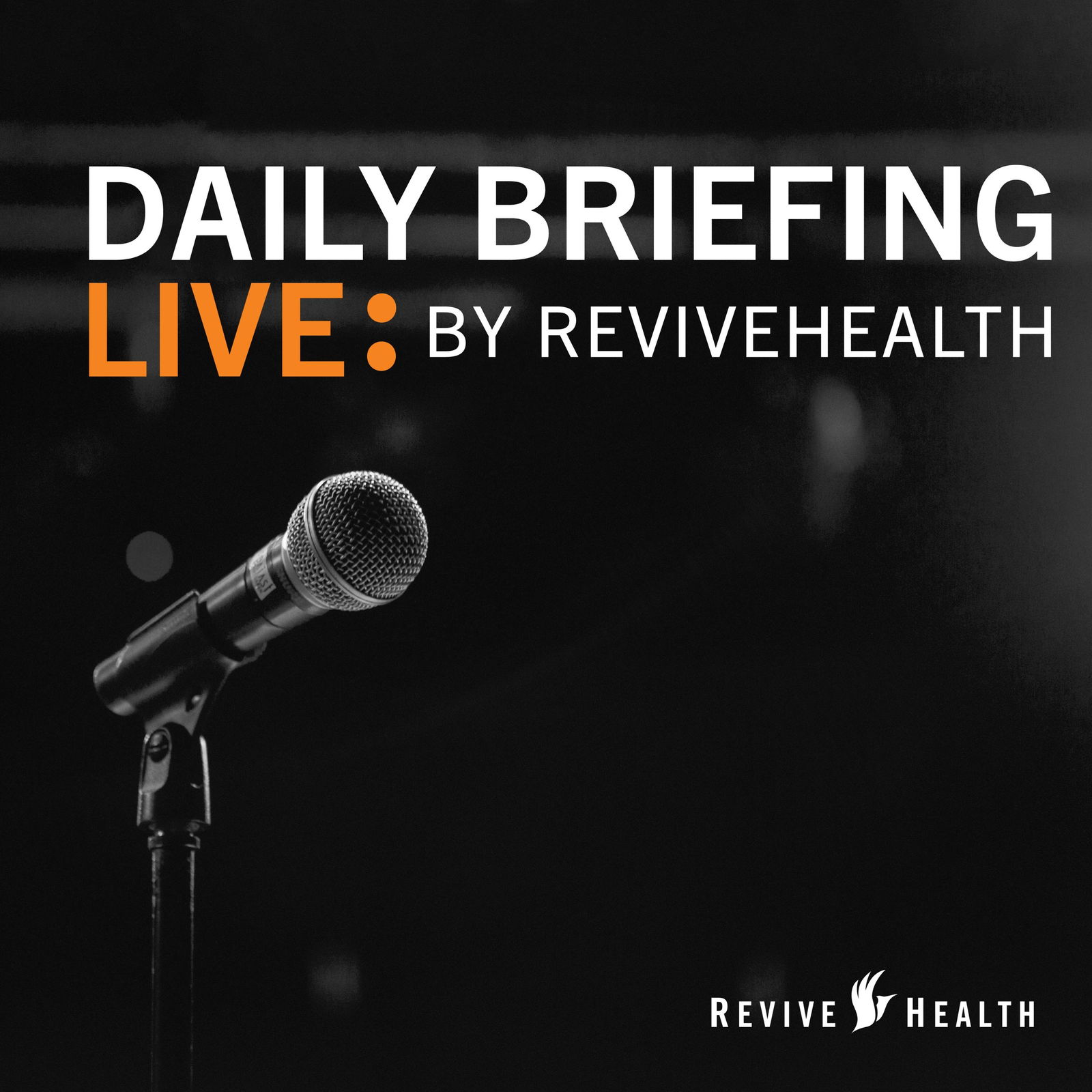
Daily Briefing Live – March 27, 2020
Key Resources Mentioned in Today's EpisodeYesterday's Daily Briefing Live Podcast with Ryan ColaianniSHSMD Resources on COVID-19Key Takeaways from Today's Episode:We need to represent what the CDC is recommending as far as stay 6 feet apart, keep children away from the elderly, in our marketing collateral.Smiling health care workers and hospital leadership is very tone-blind right now.About Daily Briefing Live:Daily Briefing Live is a 30-minute live video podcast focused on how health system marketers and communicators are managing the COVID-19 crisis.Each day, we’ll feature the latest that we’re hearing from the industry and our clients, the most up-to-day recommendations and ideas, and provide a forum for attendees to ask questions. We’ll post a recording of the podcast each day for download, and then we will be back, every weekday at 12:00 CST, until this crisis passes. To join the live video podcast each day, simply visit http://bit.ly/daily-briefing-live at 12:00PM CST.
30:3231/03/2020
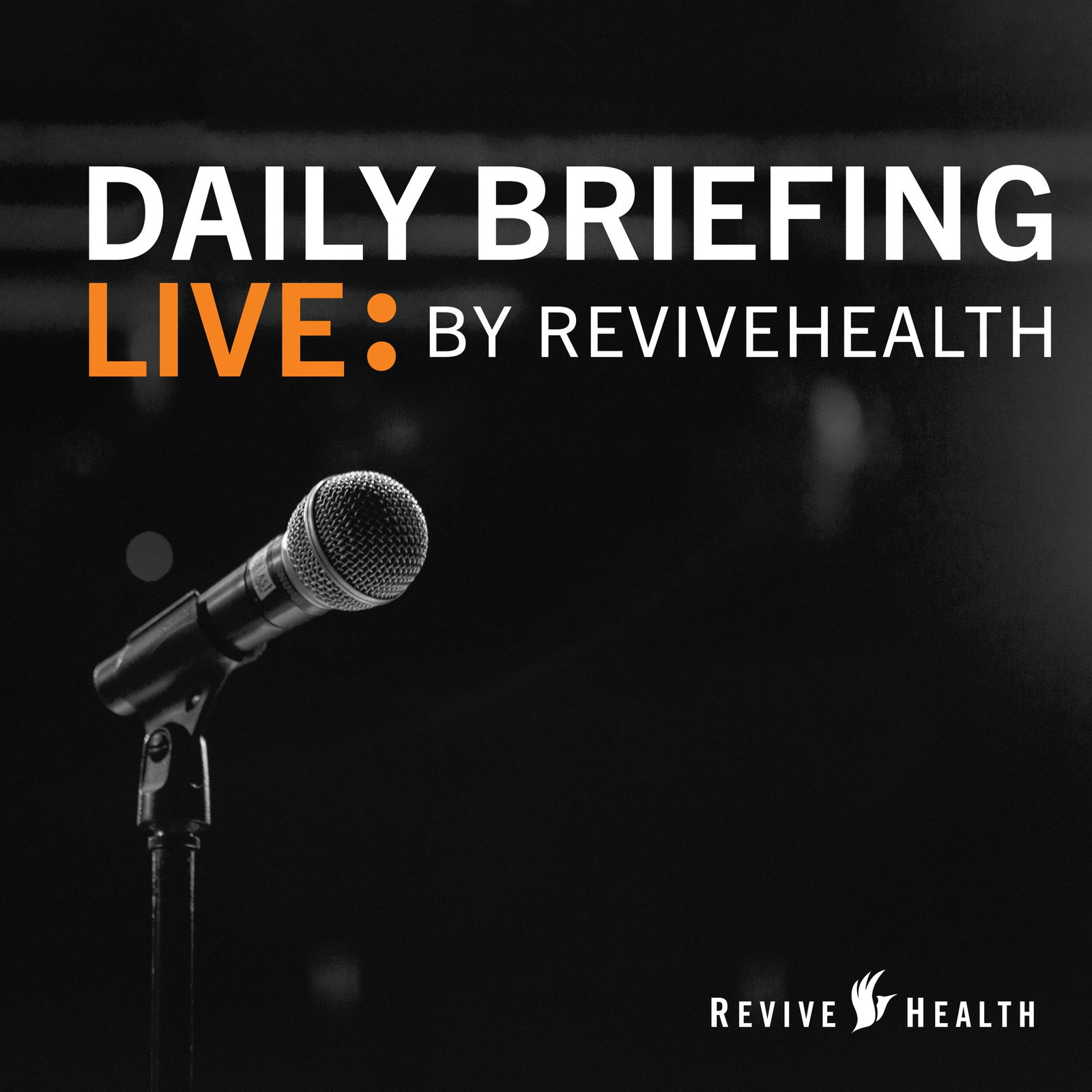
Daily Briefing Live – March 26, 2020
Key Resources Mentioned in Today's EpisodeTurbine LabsNurses Share Coronavirus Stories Anonymously in an Online DocumentBrandon Edwards, CEO of ReviveHealth's Blog PostKey Takeaways from Today's Episode:Communicating internally about increasing flex time and the reduction of physician compensation is becoming a likely possibility, and getting ahead of these rumors is essential for your organization.In a specific example, email open rates for internal communication with physicians was about 70%, but when they looked at all staff, it was closer to 25% open rate. It's critical to find channels that will ensure the hospital staff sees this content.Create a place that allows physicians to ask questions to leadership and get answers.Being ready to respond to attacks from unions quickly will be very necessary. Where possible, back up your messages with facts and data.Health systems need to be thinking about how their staff and move beyond thank yous. The front line staff inside a health system will have secondary trauma after this pandemic and will need our help during and after this crisis.Marketing and communication leaders need to put a lot of effort, thought, and resources into creating an ongoing campaign that is all about supporting their front line staff.If your health system has a magazine that you send out to your community, it's essential to update this content to make it relevant to the COVID-19 crisis. Which this can be a challenge given magazine timeframes, but a 4-page magazine that's relevant to the crisis is way more effective than continuing to push an outdated 16-page magazine that promotes your knee replacement surgery.
28:1927/03/2020
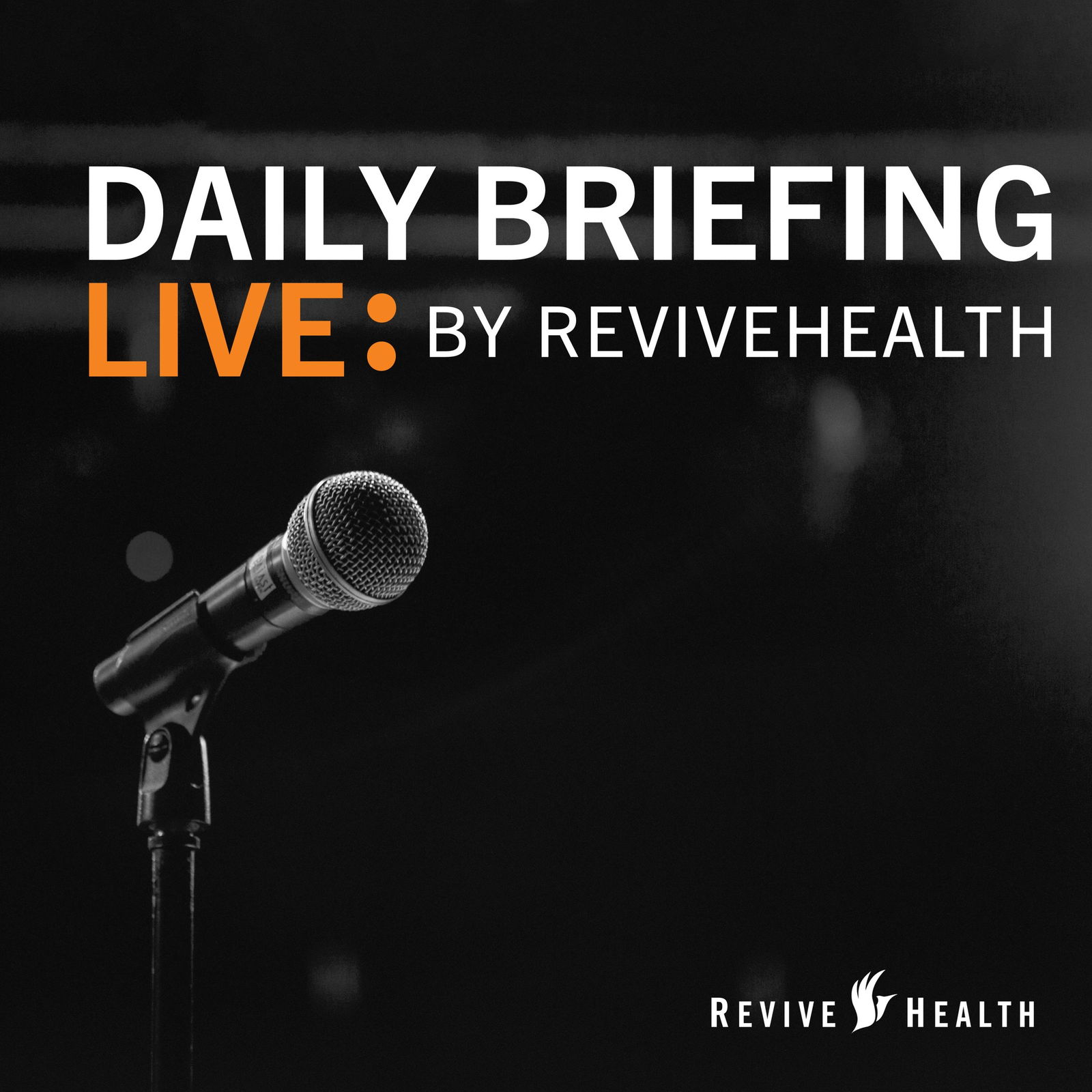
Daily Briefing Live – March 25, 2020
Key Resources Mentioned in Today's Episode:COVID-19 Digital Digest Report by ReviveHealthGoogle's Resource on COVID-19Google’s Recommendation On Updating Google My Business Profiles Key Takeaways from Today's Episode:Google is demoting its core algorithm in favor of “handpicking information,” aka human vetting. Real people are monitoring daily search queries day and night with a focus on sourcing content from government agencies first and foremost, followed by first responders, trusted media sources, NGOs, and other Google services.Building out COVID-19 specific content that is updated at least daily, if not hourly, is the key.Think about the questions that your patients and communities are asking and how your health system can answer them. Consider ways this kind of content can come to life in unique and interesting ways such as infographics, downloads, and video clips.Health systems should focus on consistently updating their Google My Business profiles within the upcoming days, weeks, and months.Google Search Network is not allowing advertisers to bid on “COVID-19” or “coronavirus” keywords because of the “sensitive” nature of the terms, and Google Display Network is banning ads with COVID-19 content.Consider how you can adjust your messaging, both in terms of ad copy and creative as well as landing page and website experiences, to meet the new needs of consumers and better position your brand.
27:2127/03/2020

Daily Briefing Live – March 24, 2020
Key Resources Mentioned in Today's EpisodeReviveHealth's Resources on COVID-19Strategic Healthcare Marketing WebinarFierce Healthcare Article on Fast Tracking Telehealth ProjectsPaddy Padmanabhan's Damo Consulting E-NewsletterProPublica's Hospital Bed Capacity ScenariosNew York Times Coronavirus Deaths by State and Country"COVID Coping" Instagram Video Key Takeaways from Today's Episode:64% of consumers want to hear from your health systems at least once a day.The highest level of consumer trust is with their local healthcare experts, even higher than local government. So it's crucial you are getting the word out daily.46% of consumers have never heard of telehealth, and before COVID-19, the utilization rate of telemedine was 4-8%. Given this, we have to provide education and tutorials to get consumers and physicians comfortable with the new technology.Health systems that are getting their physicians up to speed are implementing these backhouse teams that support faculty to ensure it’s a good experience for physicians and their patients. This involves coaching sessions and also help with setting up the technology.When it comes to employee engagement, we have to address what people need versus what they are doing.Every health system needs to have a strategy in place to talk to clinicians, nurses, physicians daily about what they’re doing and what they're trying to do for PPE shortages, capacity issues, etc.The friction between nurses and healthcare leaders is real, but you can come out of this by showing how much you care through consistent communication about what you’re actively doing to help.Whatever you say to employees, imagine they will take it in the worst way possible. The words you use to describe what you want or how you inform employees on specific issues is incredibly important.If your system is only reacting to what’s happening now, you will always be behind in this COVID-19 pandemic. Figure out what your plan and messaging for future scenarios and establish a trusted cadence of communication that is very specific to clinicians and physicians, as well as other staff and community members.
31:1327/03/2020
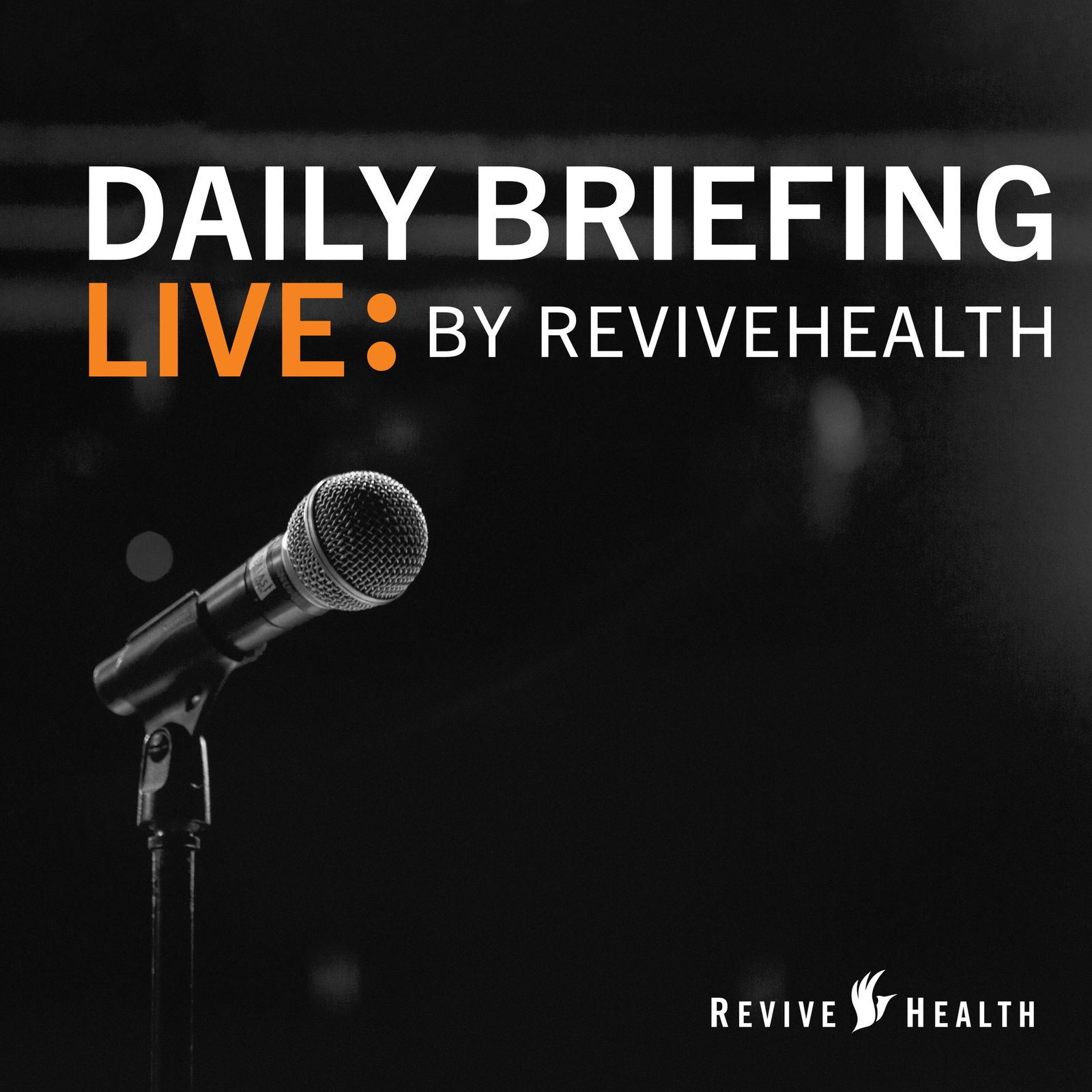
Daily Briefing Live – March 23, 2020
Key Takeaways from Today's Episode:The yearly marketing plan is out the window. You need to shift and adjust.Keep it simple. We need to be timely, simple, useful and relevant.But this crisis will also shape our brands in profound ways, and potentially for years to comeHow are we responding and dealing with the crisis clinically?What messages are we sending, both controlled and uncontrolled?How are we rising to occasion, or not?But this crisis will also shape our brands in profound ways, and potentially for years to comeThis is accelerating change that many of us already wanted to make, but couldn’t allocate the time, money or resources due to other priorities or bandwidth.Bonus Knowledge Share by Alan: I think of all the emails I am still getting from salespeople and vendors about whether I want to discuss customer acquisition or service line marketing strategies. Did I want to do that 3 weeks ago? Maybe. Now? No. All marketing and communications efforts have to reflect the current reality. If you’re basically using any of the same messages as you were before March 1, you’re probably wasting time and money. You might be damaging your brand, too.
30:1727/03/2020

Daily Briefing Live – March 20, 2020
Key Takeaways from Today's Episode:Major government entities like the CDC, local governments are not making efforts to have really key information available in Spanish. If you go to the CDC page, it still has not yet been updated with current guidelines. The last update was on February 20 - that was a month ago.Healthcare organizations must make it a priority to conduct outreach to the Spanish-speaking population to ensure that every community has the tools to make sound decisions to prevent the spread of COVID-19. The majority of Hispanics who lack regular health care say they get their information from television (64 percent).From a messaging standpoint, I would focus on family. Family or duty to family is a huge motivator for Latinos and so approaching messaging from this perspective is going to be key. It’s doubly important because Latinos, Asians, and African-Americans are all more likely to live in multi-generational homes. As we see that COVID-19 is more likely to be severe in older people, you can see how ensuring they are getting the right information is critical.Finally, I would tap into mobile – Hispanics are mobile-first. They outpace the general market in mobile phone ownership by 9 percent. 99% of Hispanic households have wireless phone service. So if information can be pushed via healthcare apps or texting programs, this is a quick way to get the right information in the hands of Latinos.
30:0127/03/2020
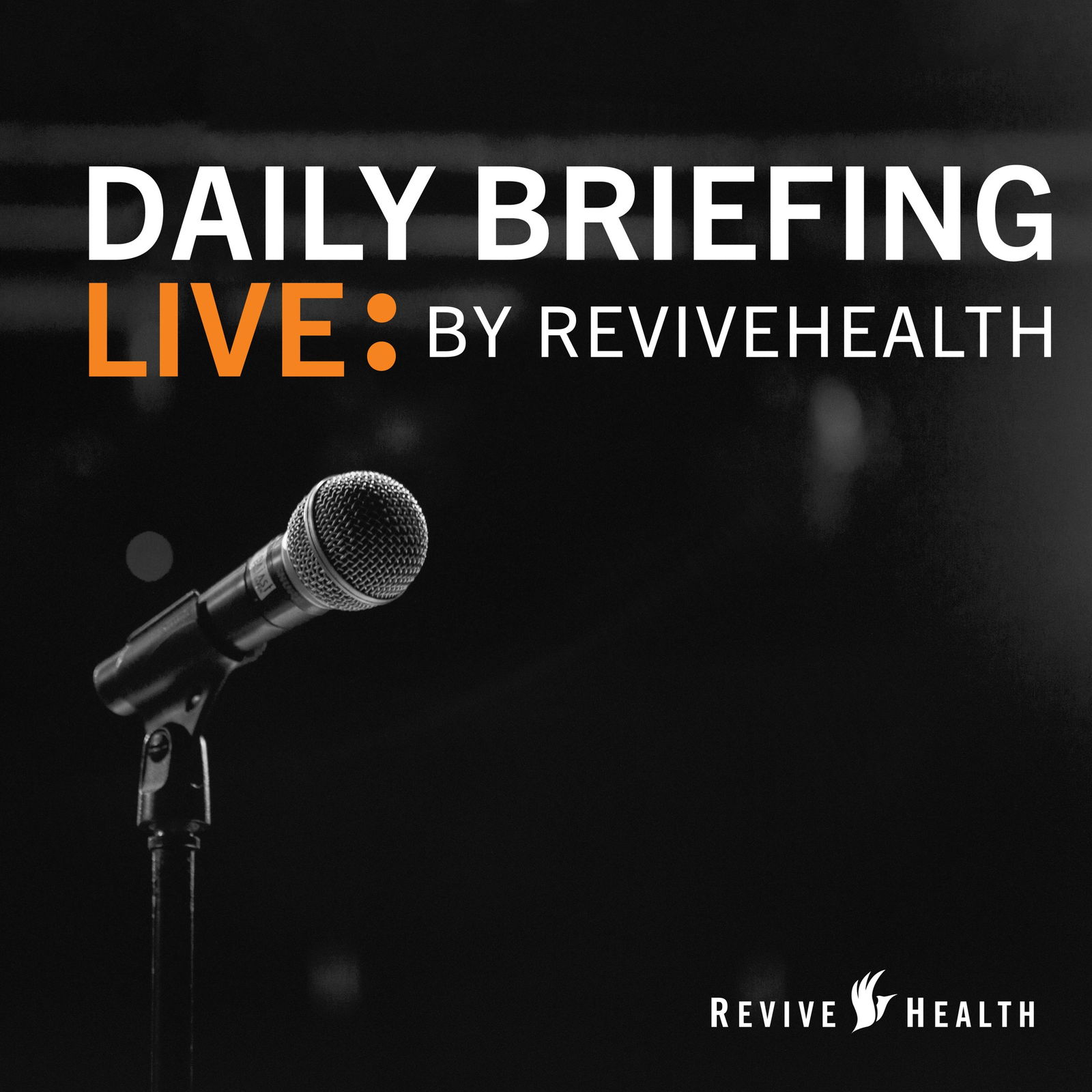
Daily Briefing Live – March 19, 2020
Key Articles and Resources Mentioned in Today's Episode:ReviveHealth's Consumer Report on COVID-1975% of Americans lack access to or have never used telehealth
31:3927/03/2020
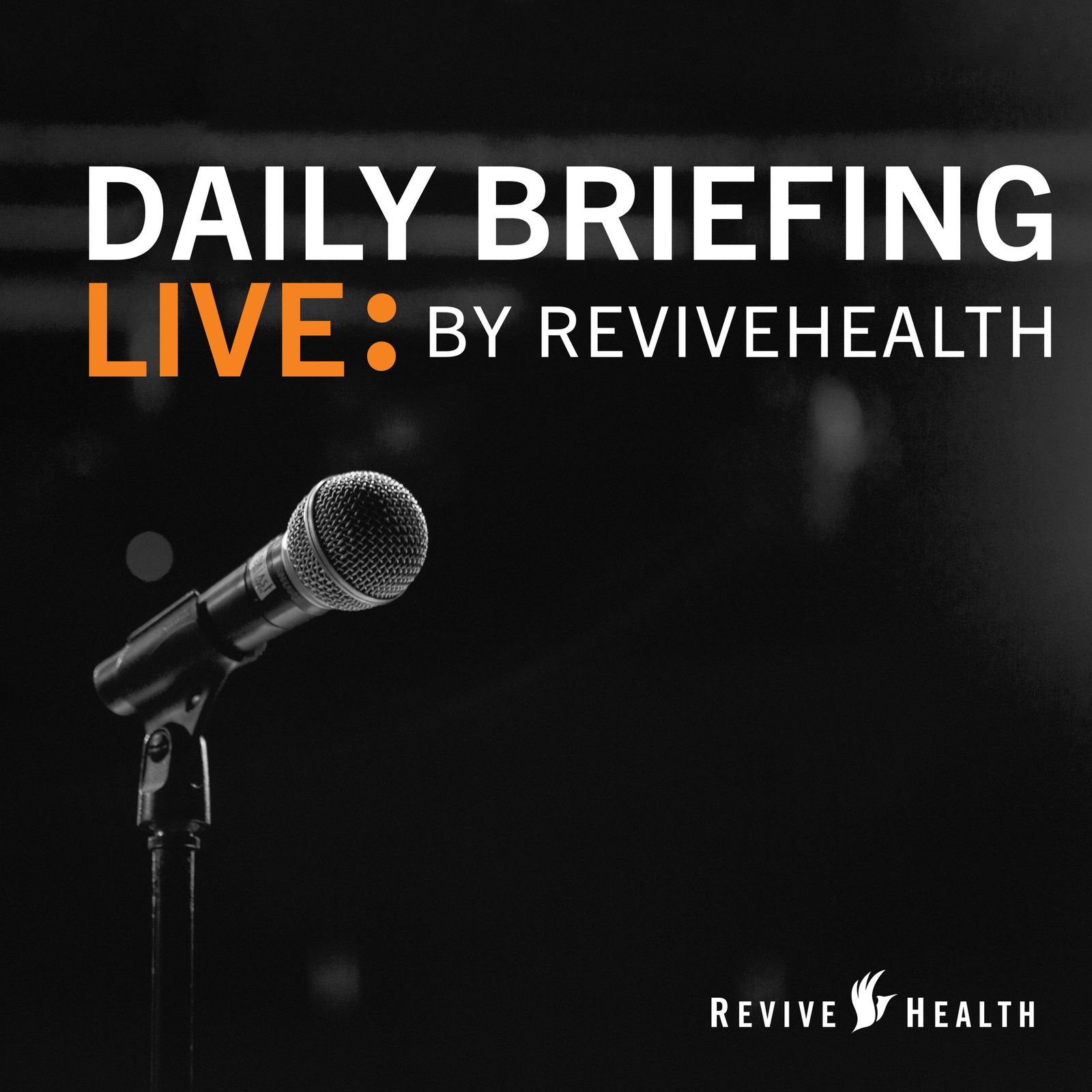
Daily Briefing Live – March 18, 2020
Key Articles and Resources Mentioned in Today's Episode:AP Stylebook tips on the coronavirusAdvisory Board's Daily BriefingCases Dashboard of COVID-19 from Johns HopkinsPersonal Account of COVID-19 from Tim HerreraGenerational Divide Index by Axios
31:1626/03/2020





